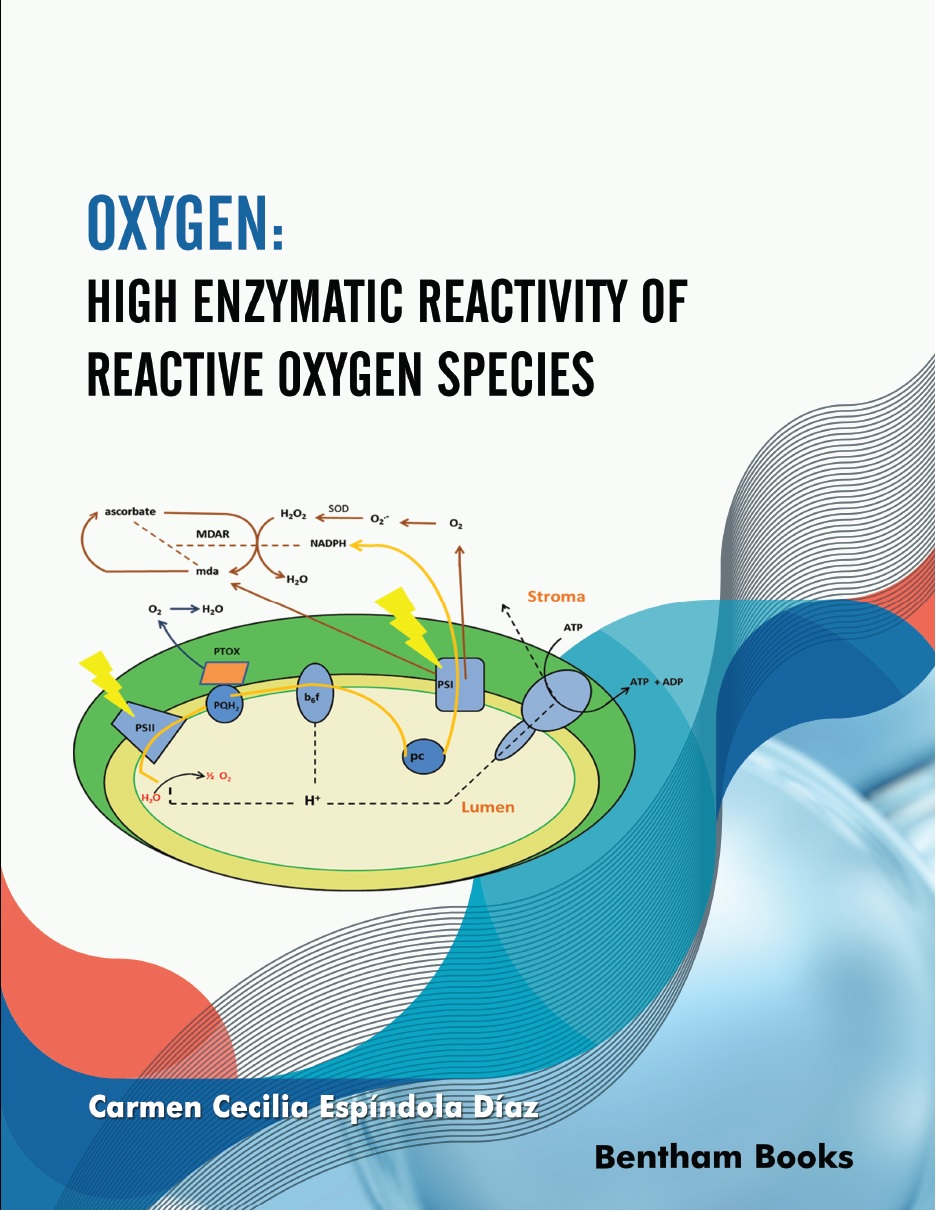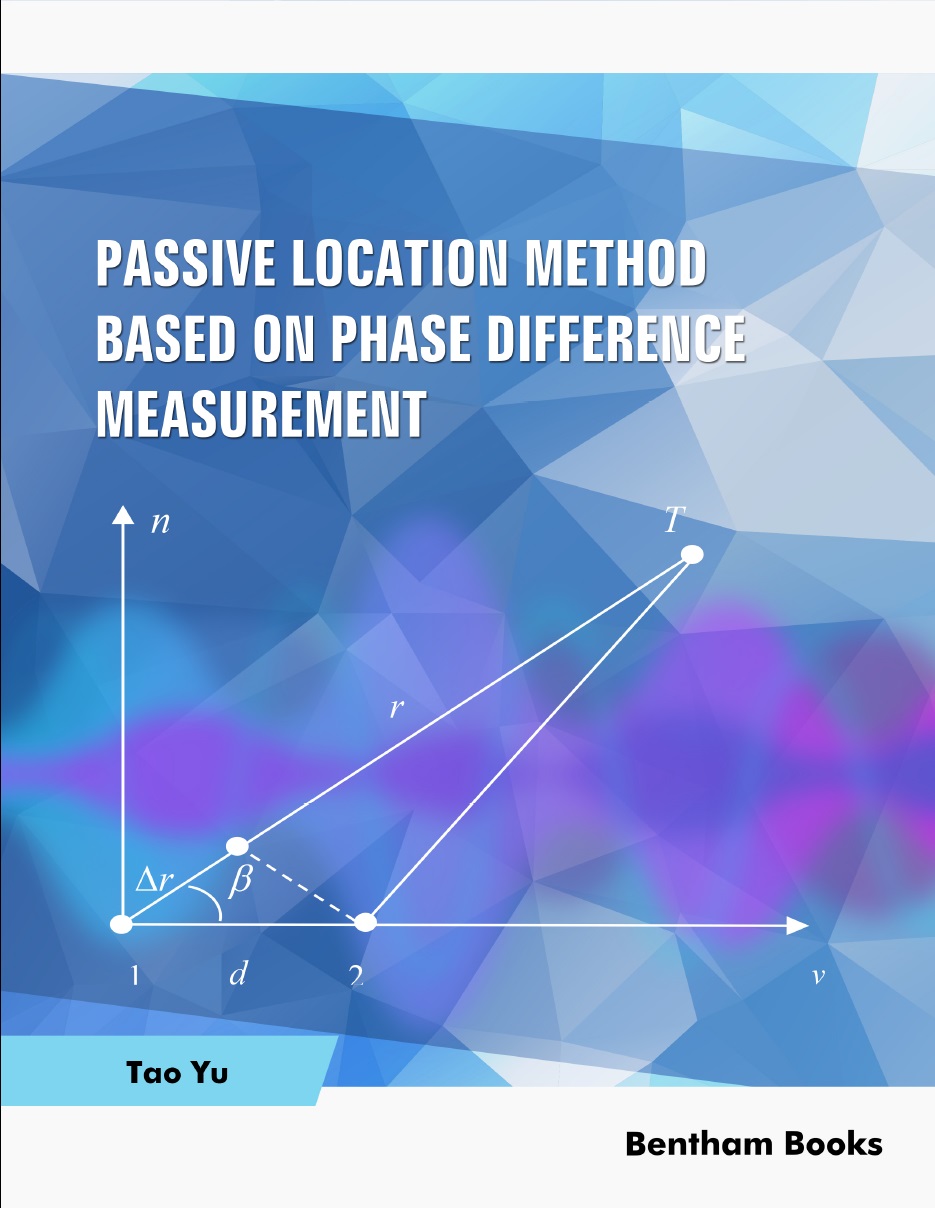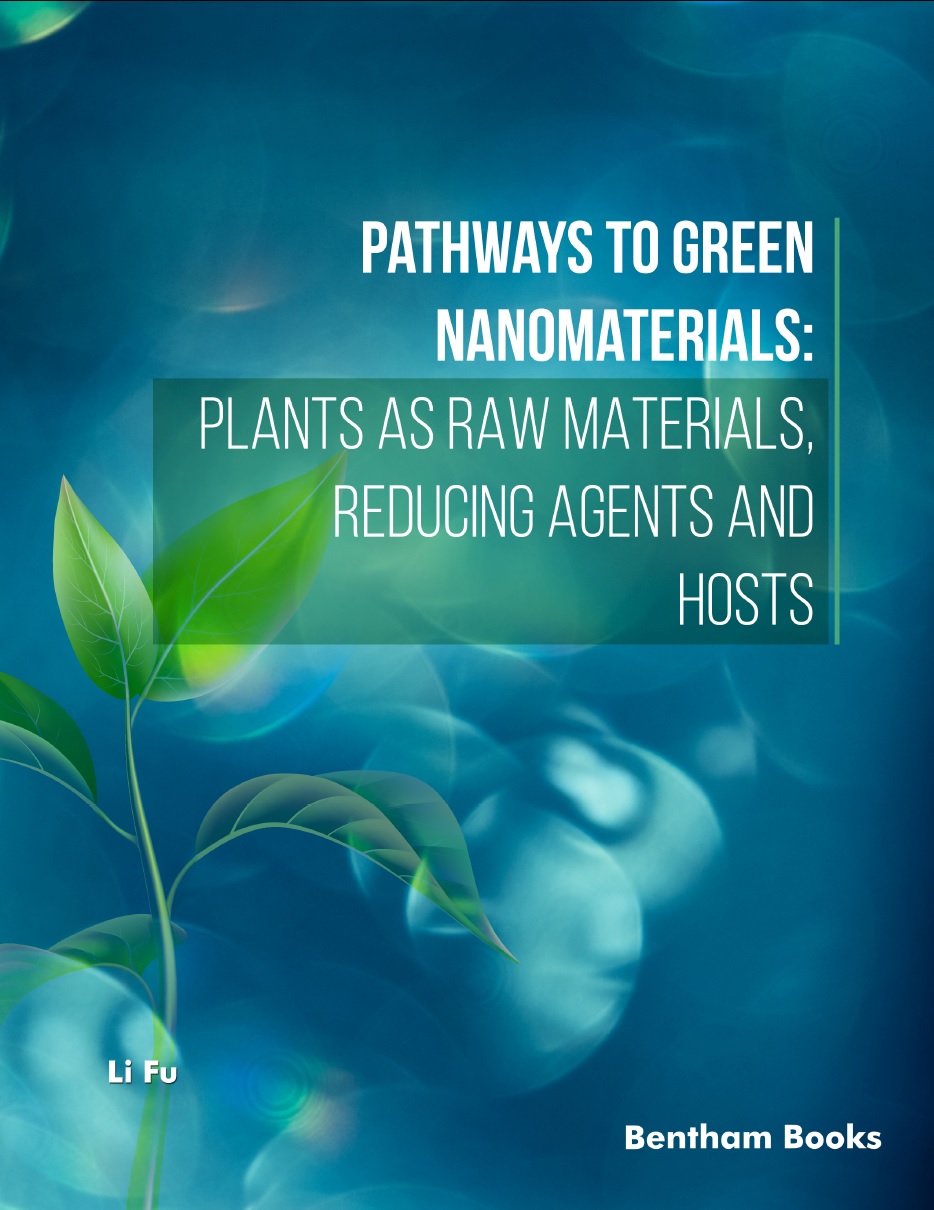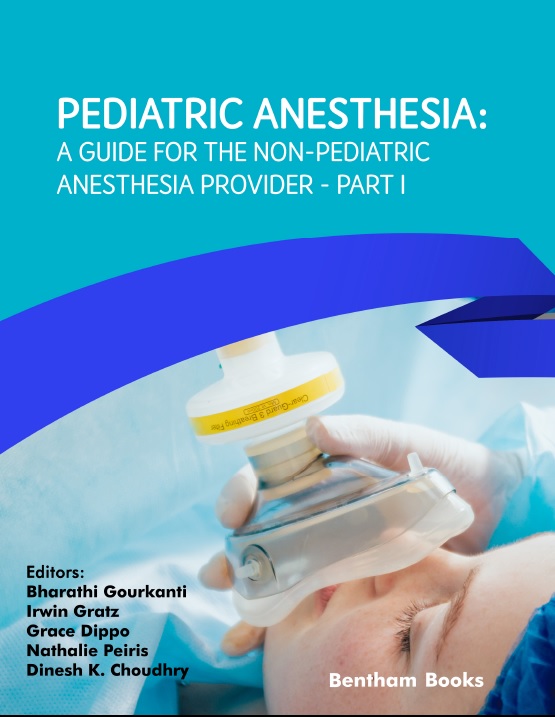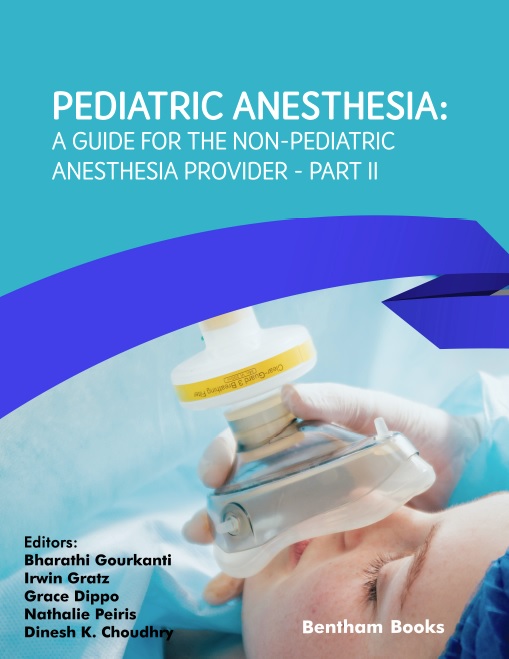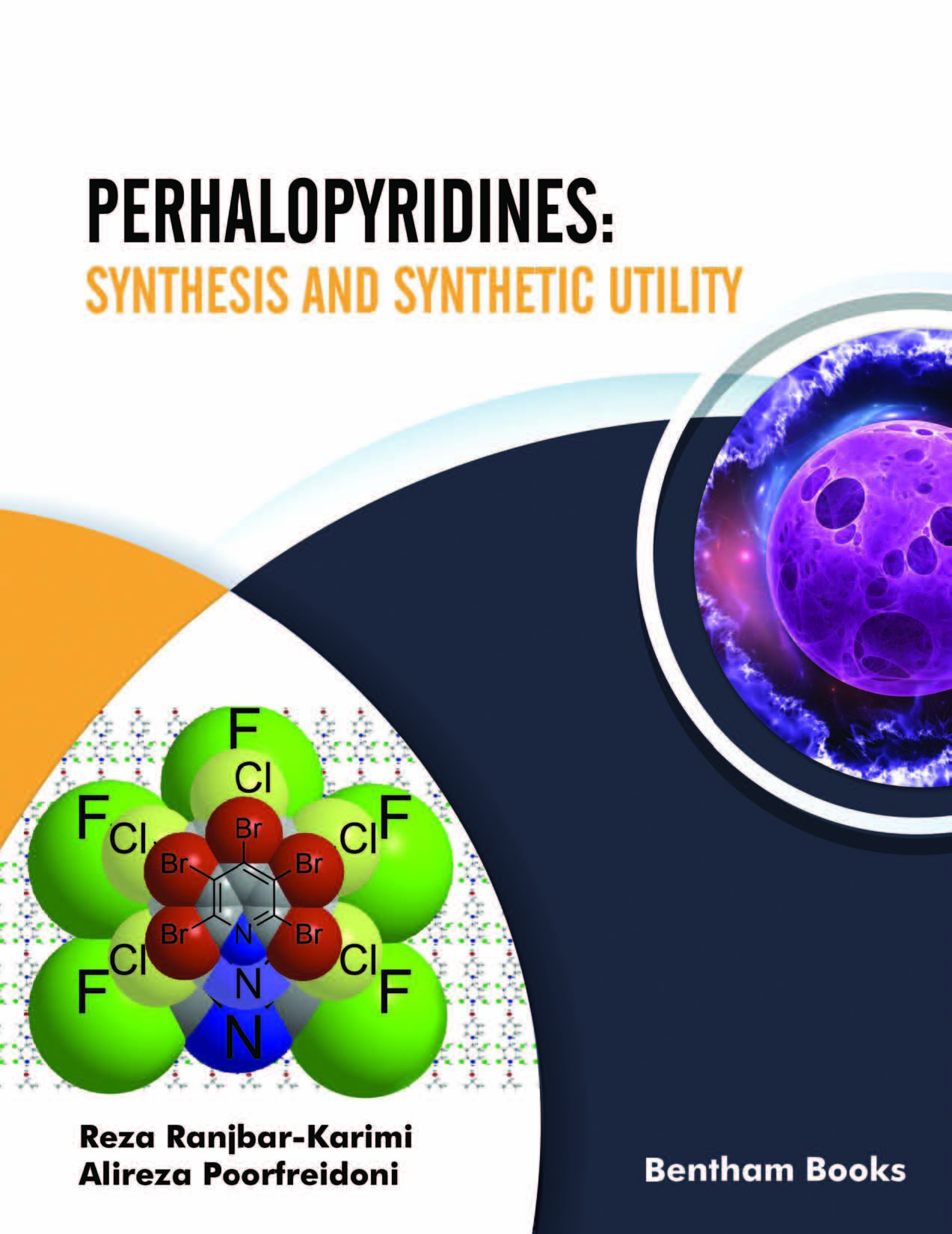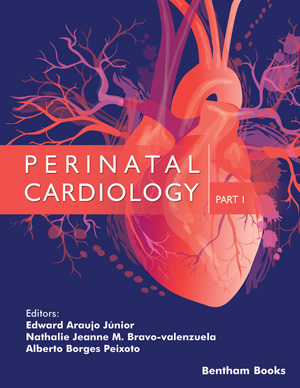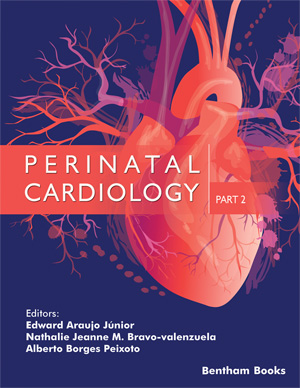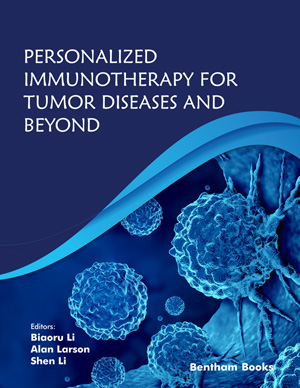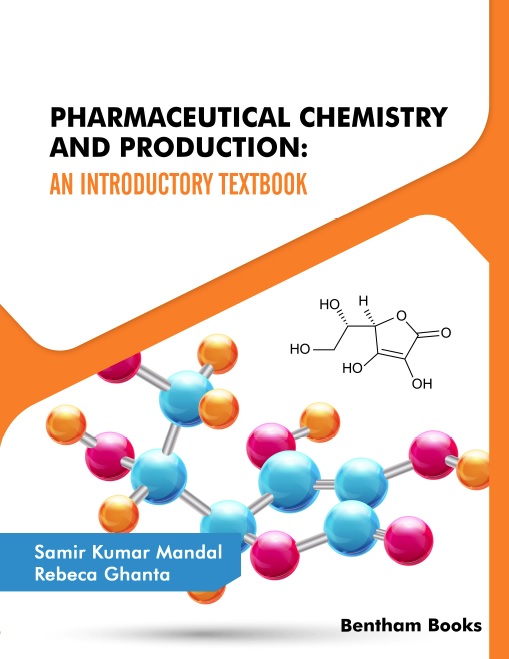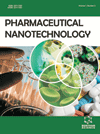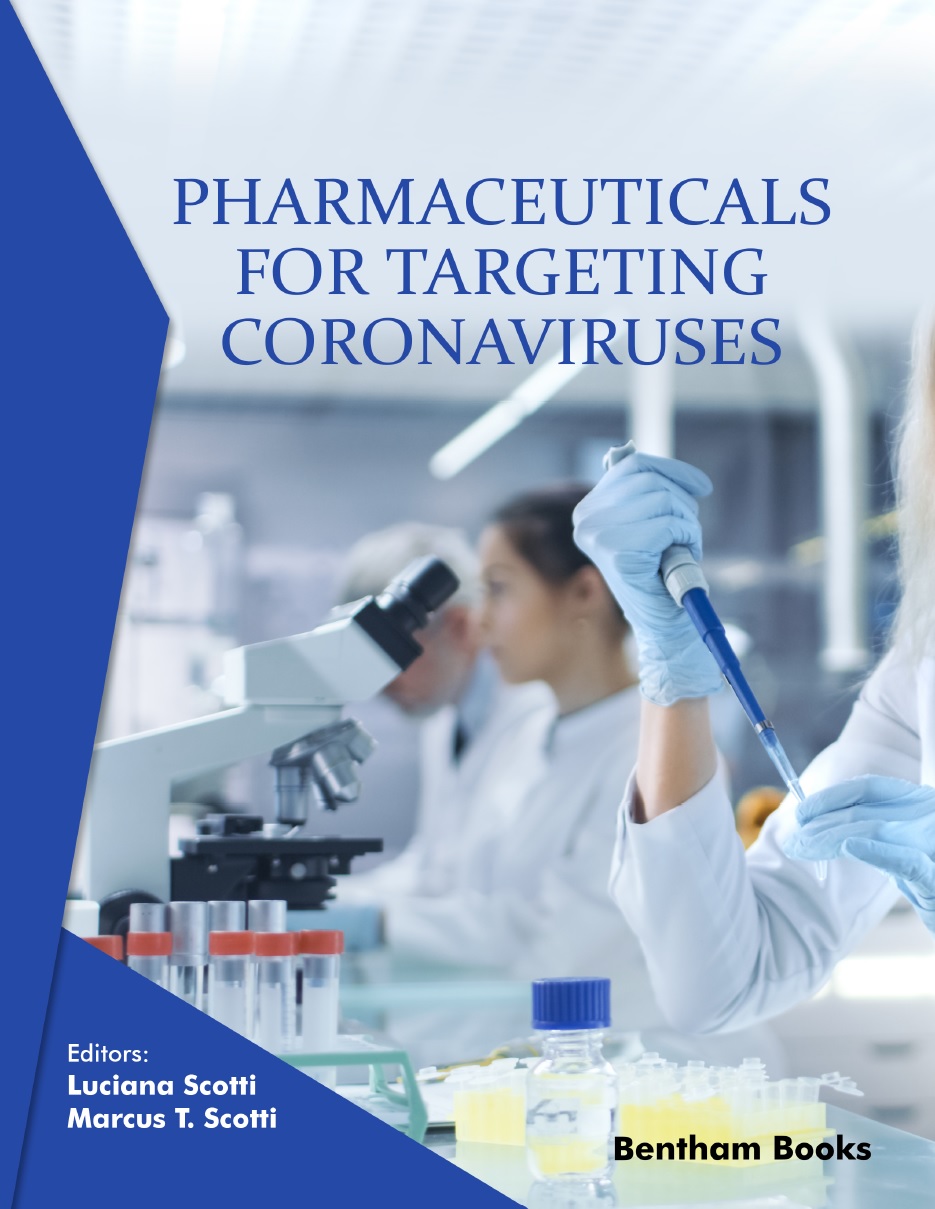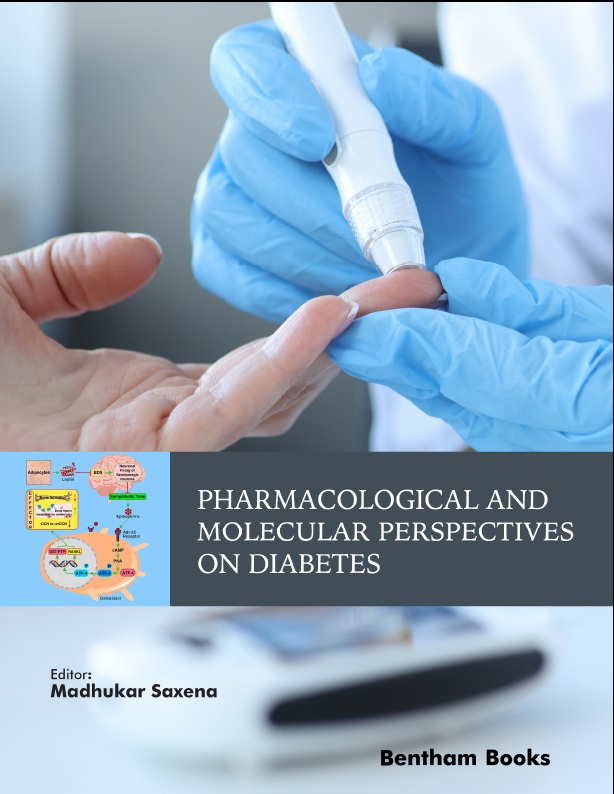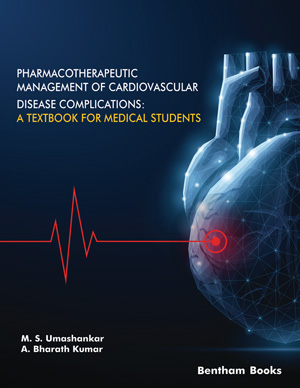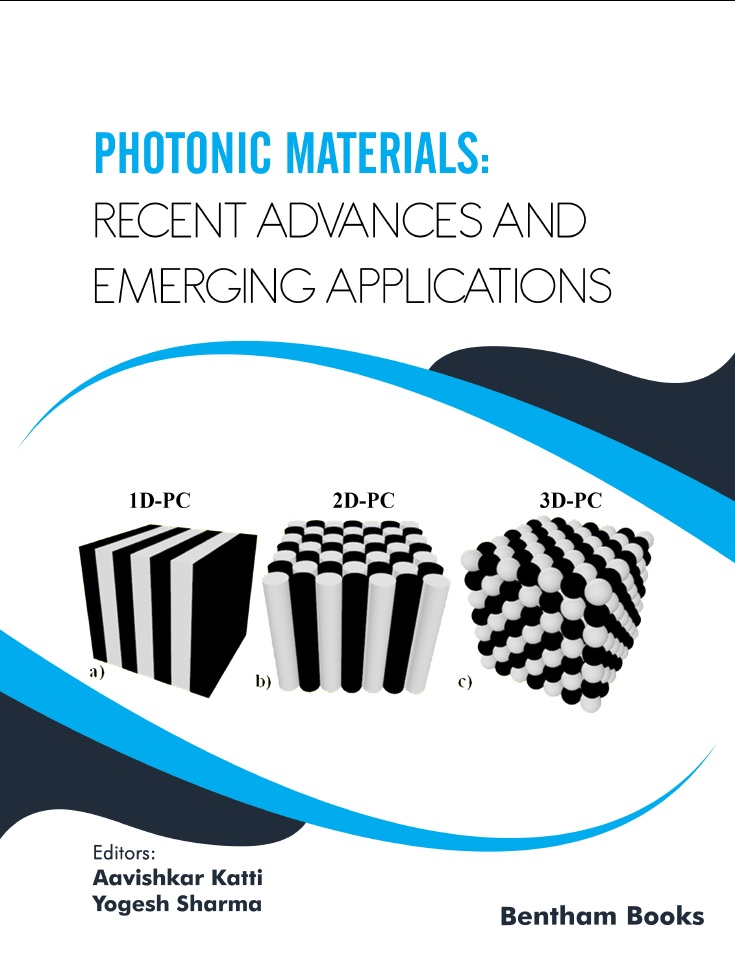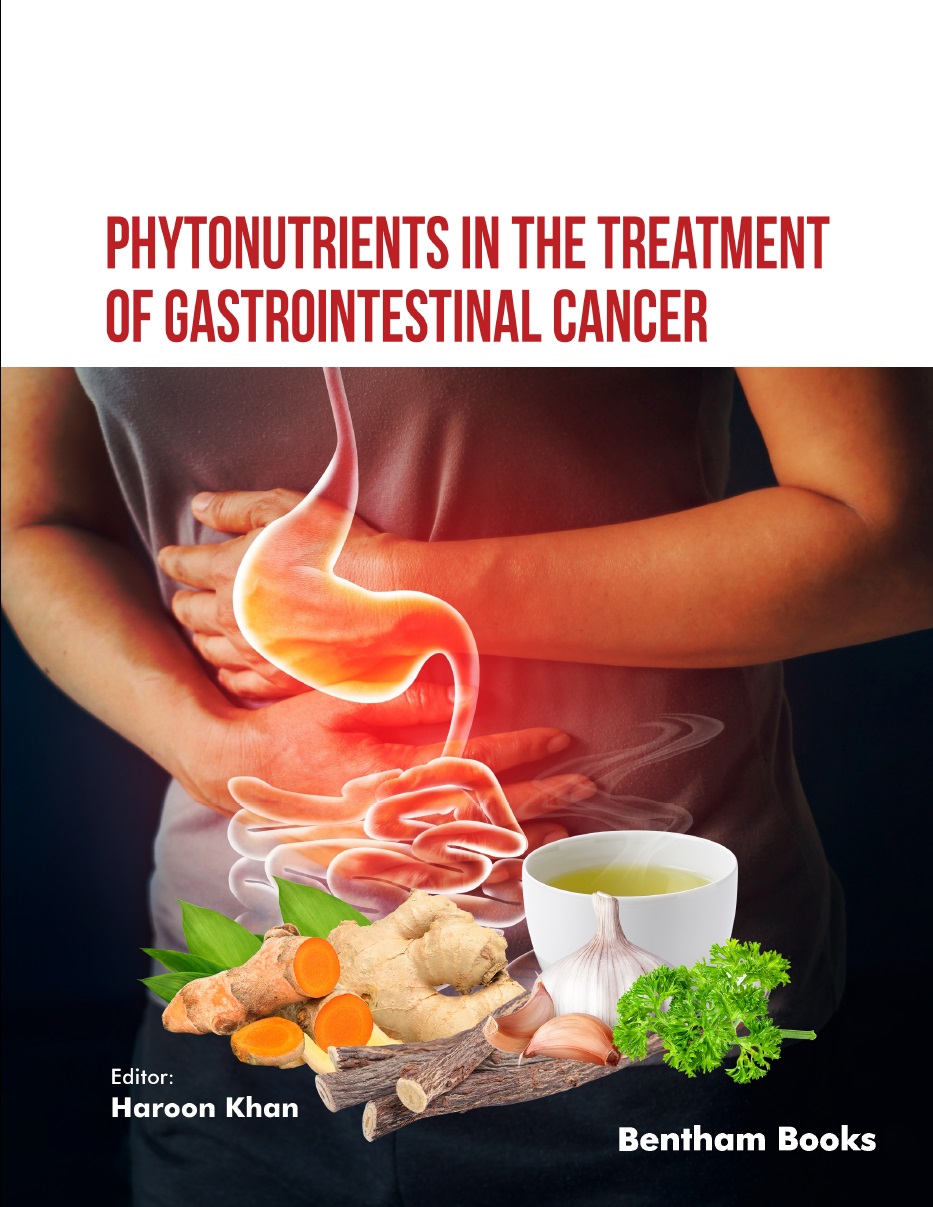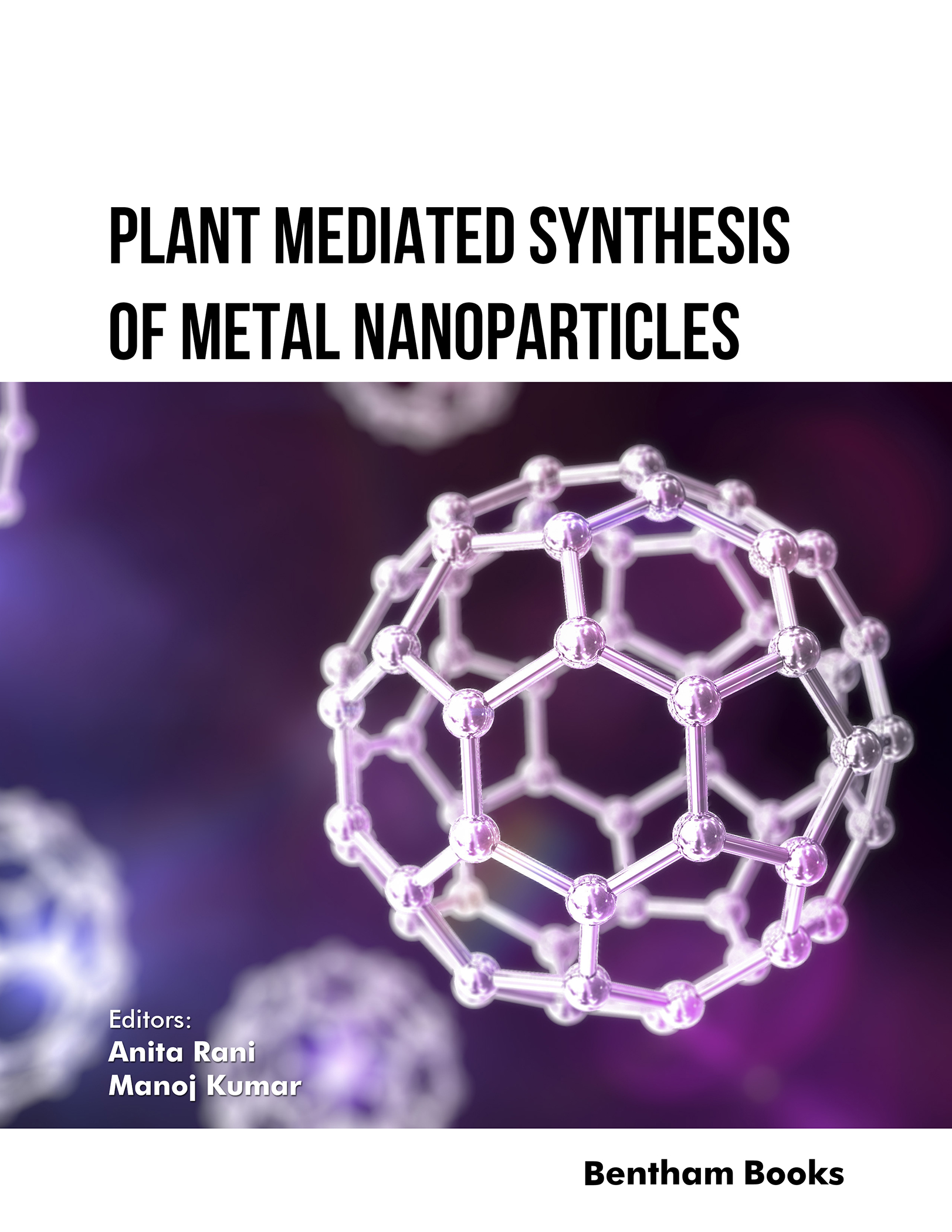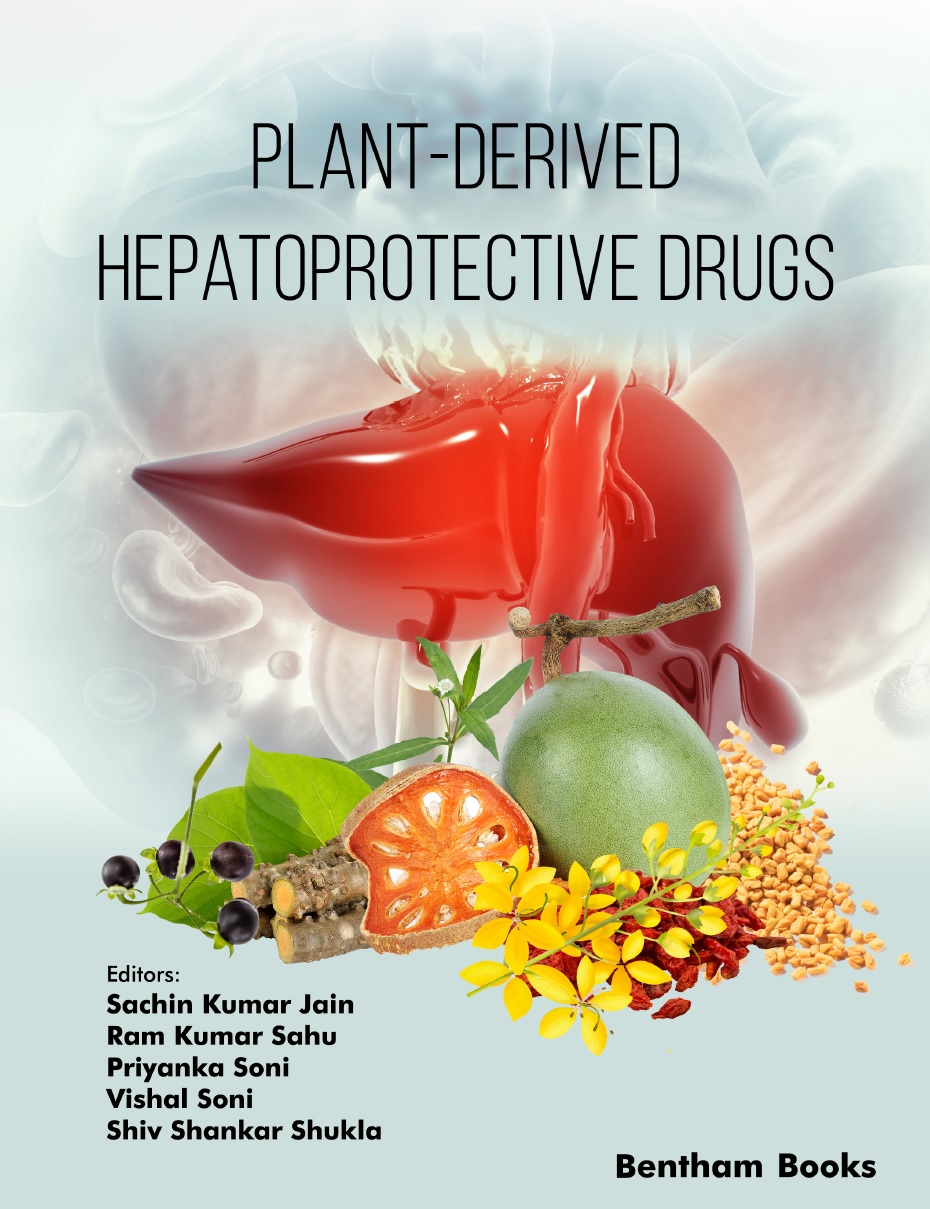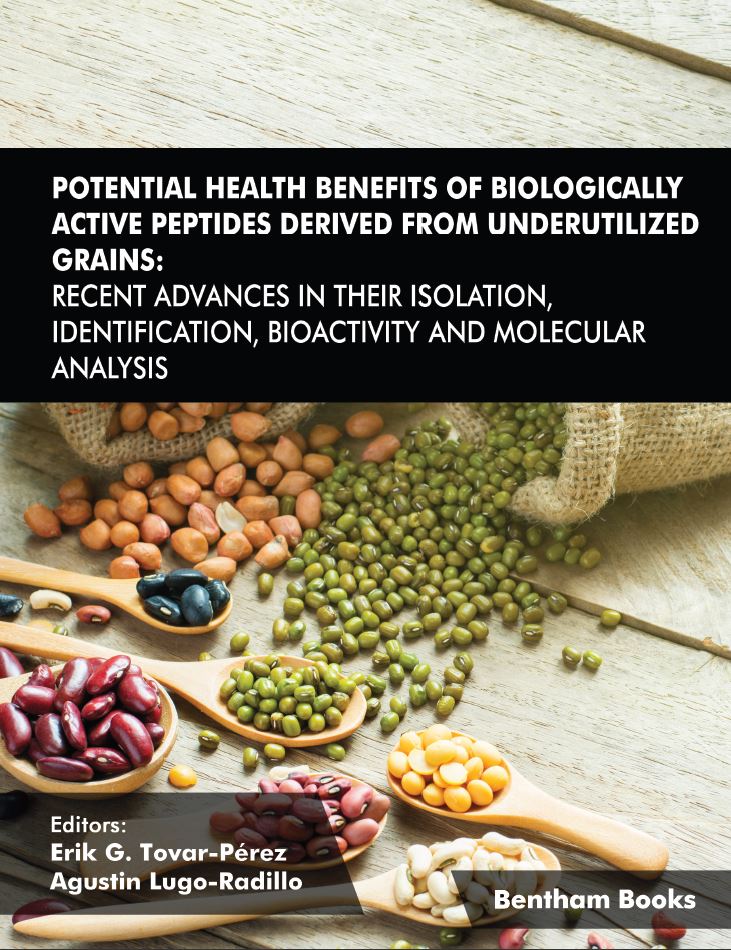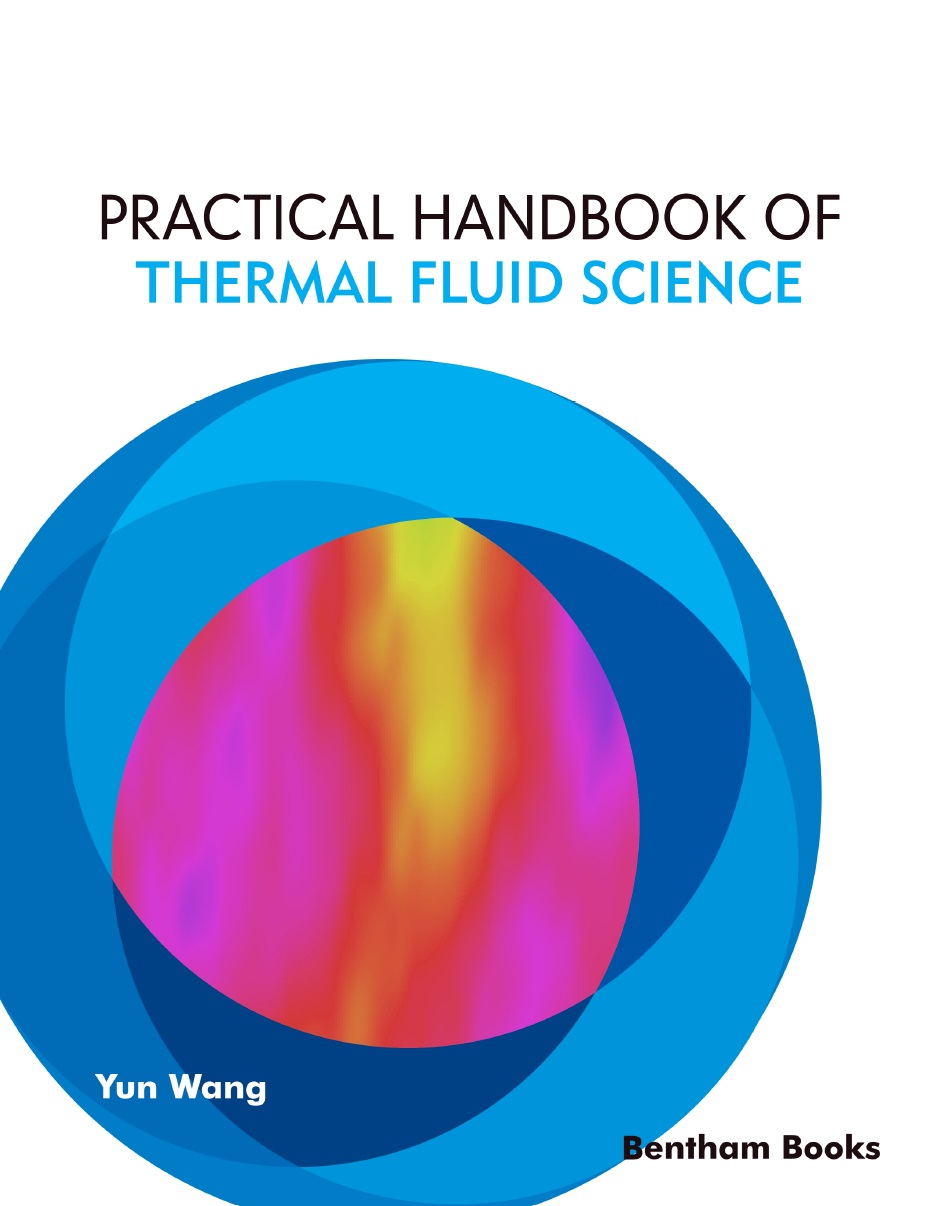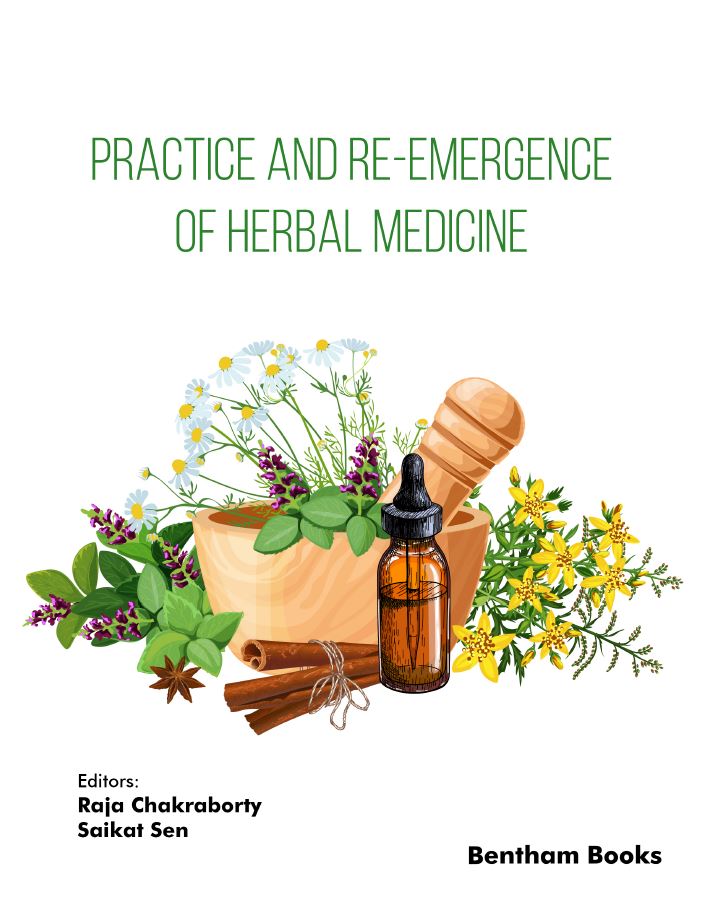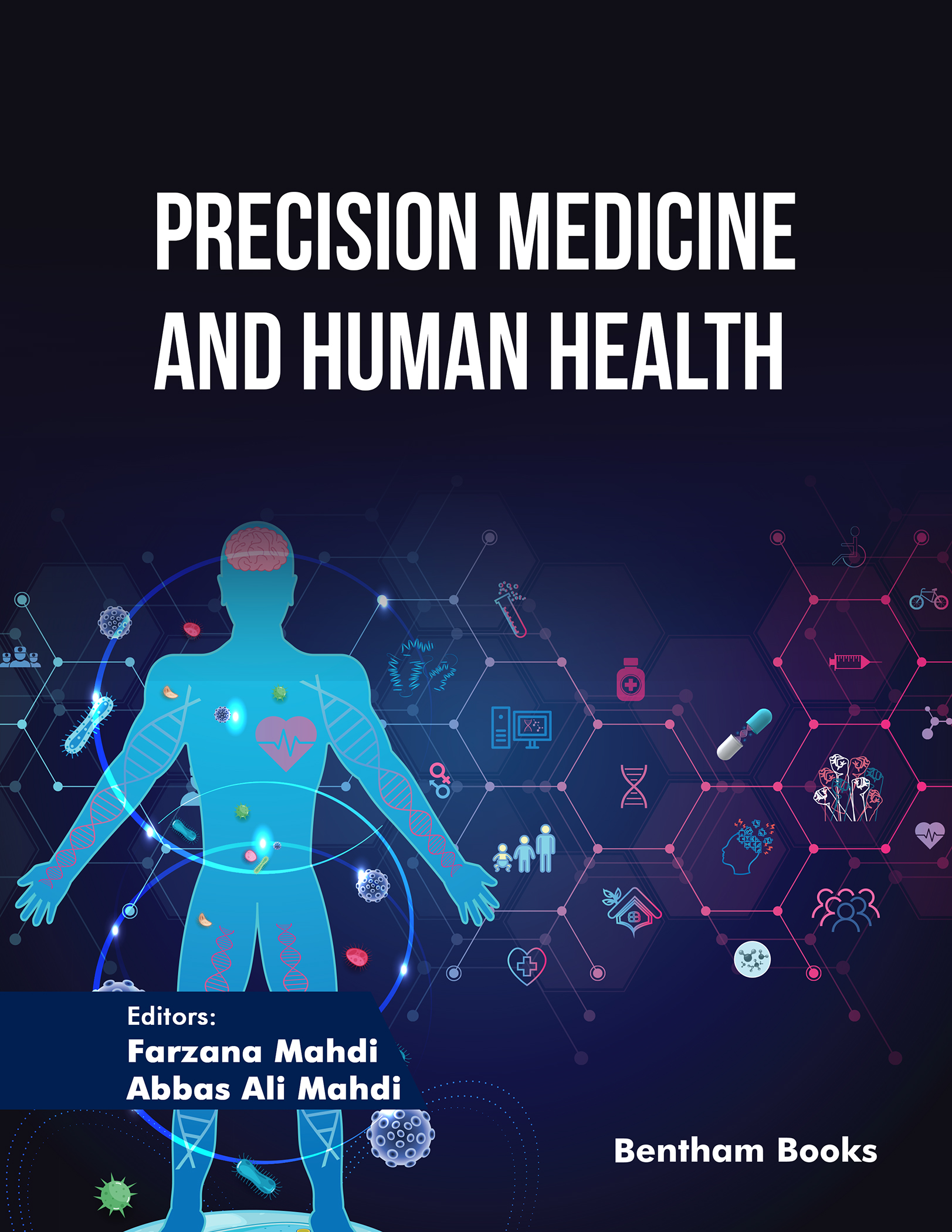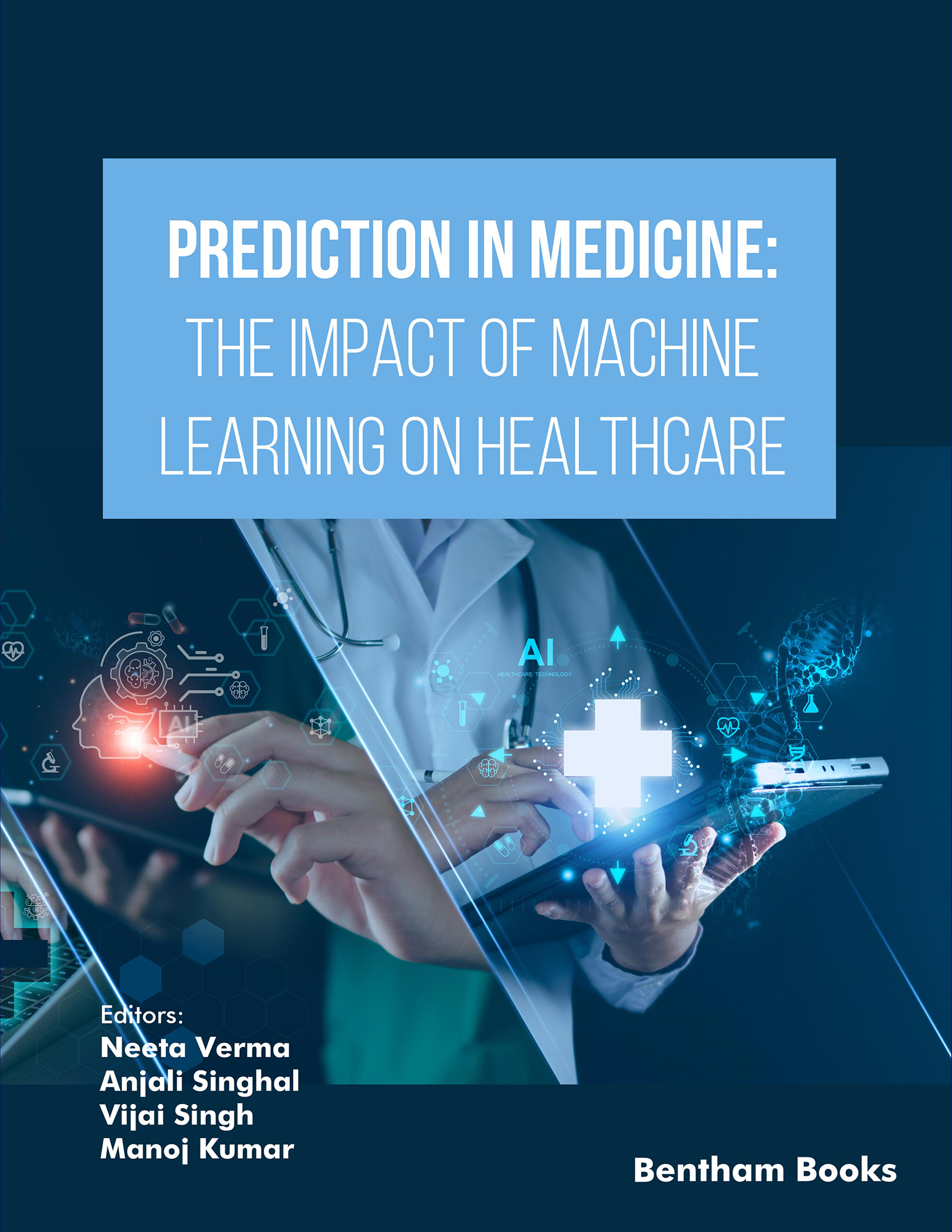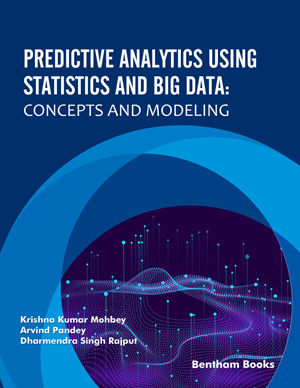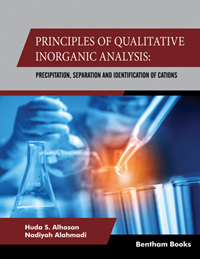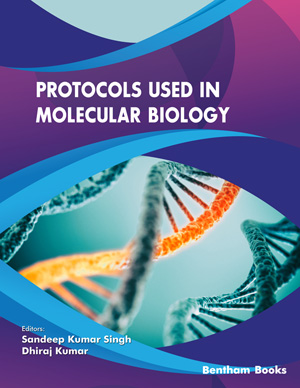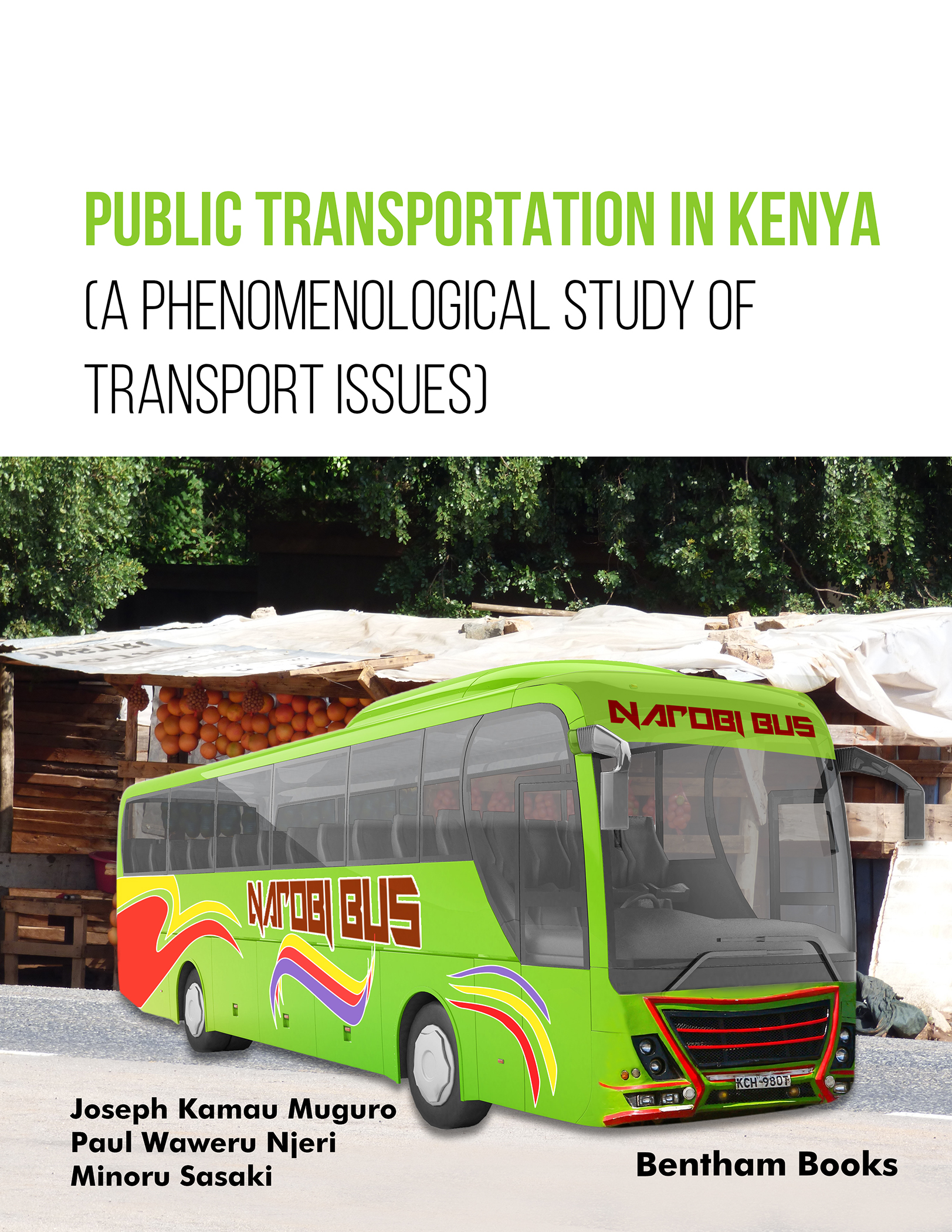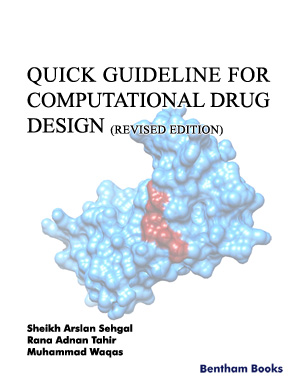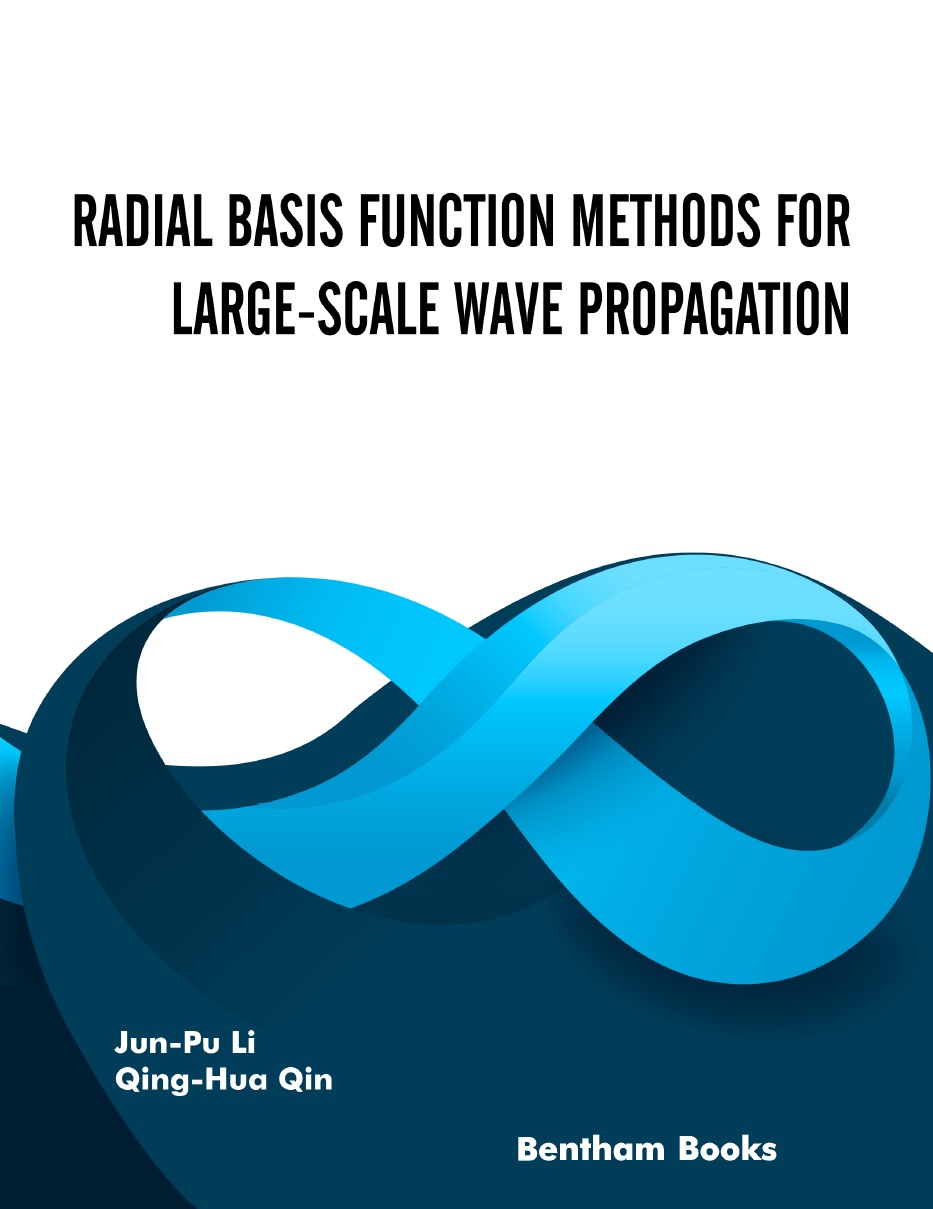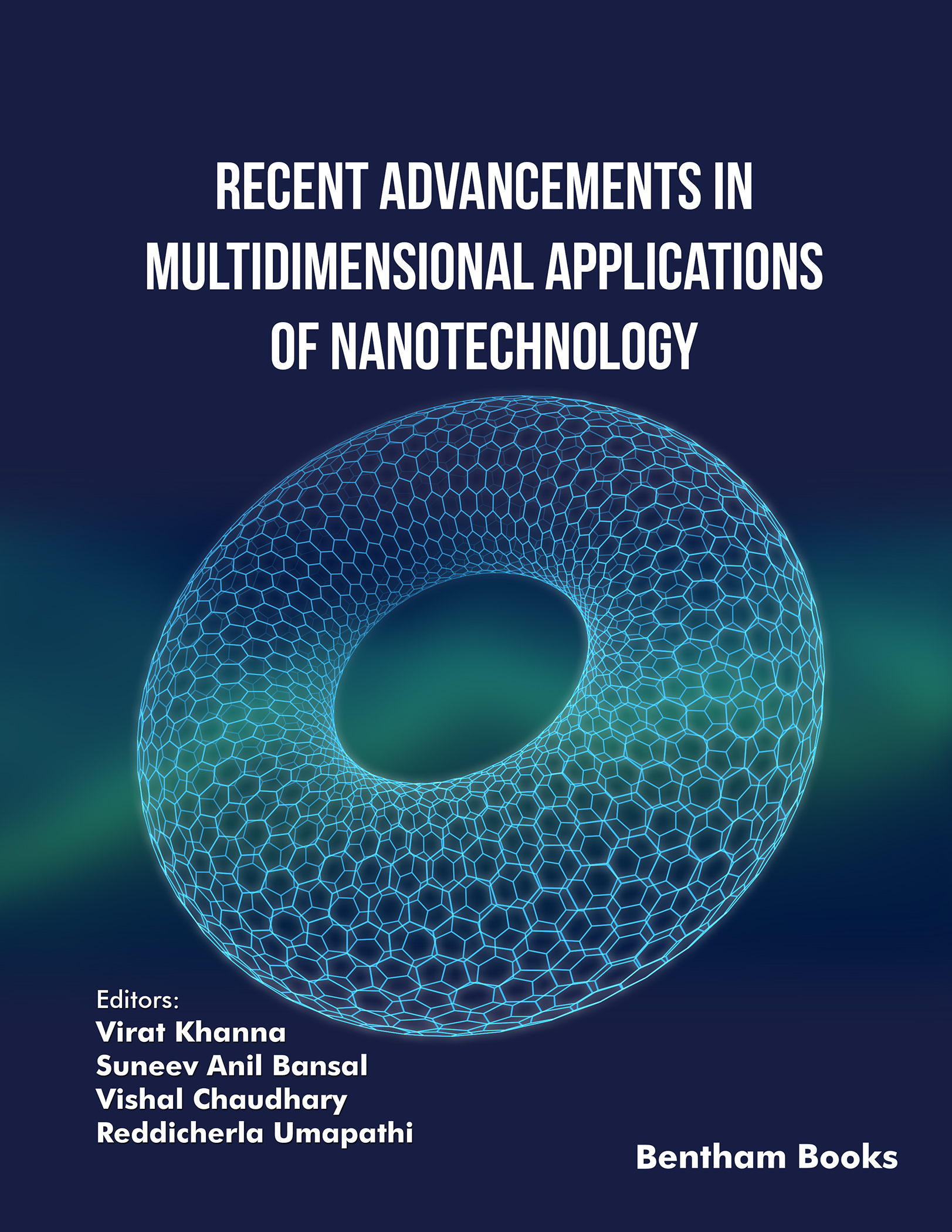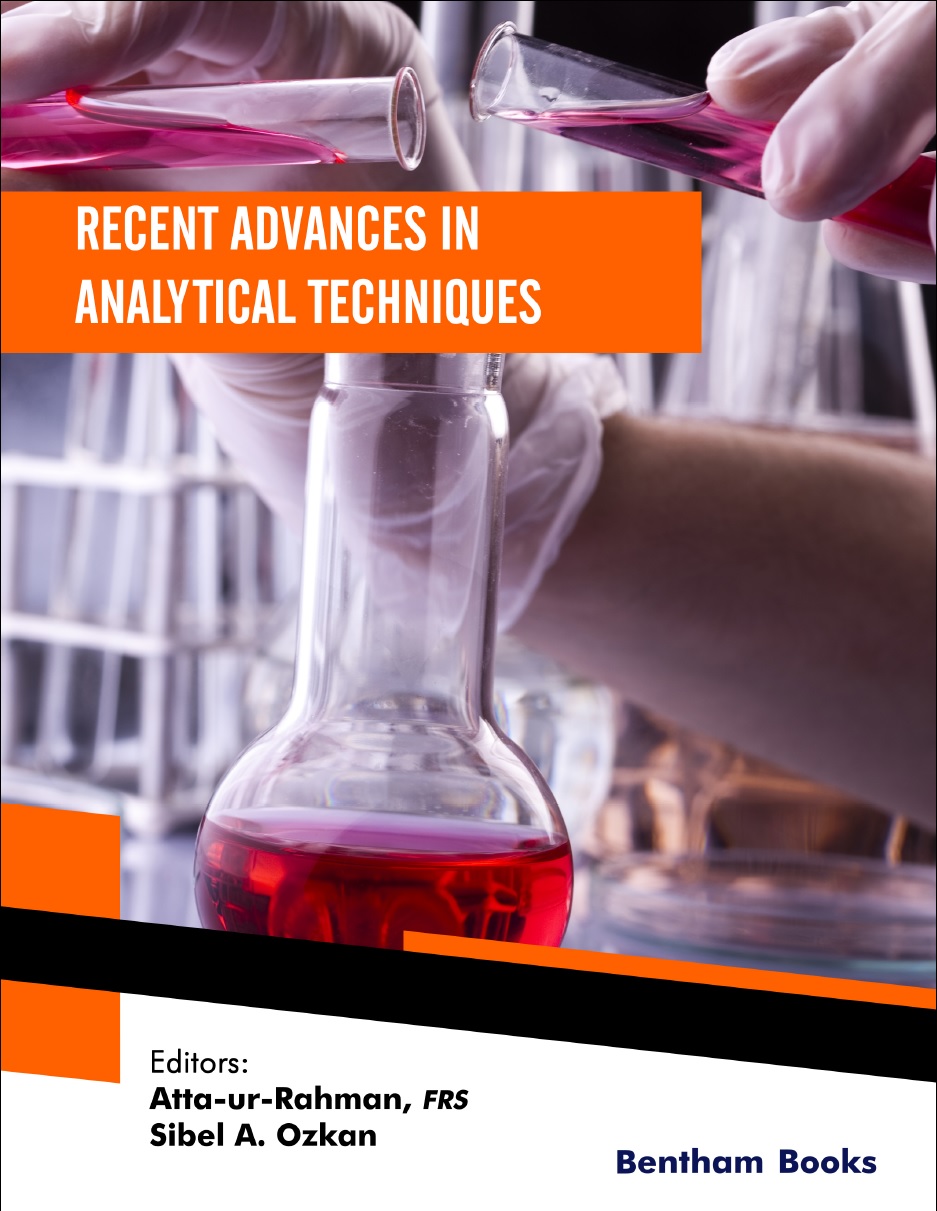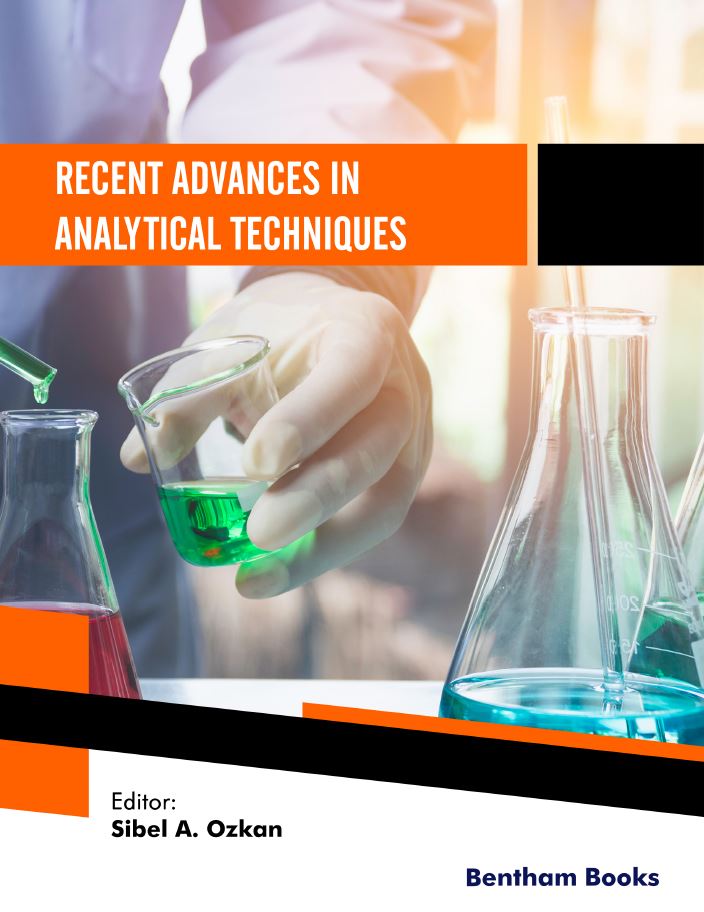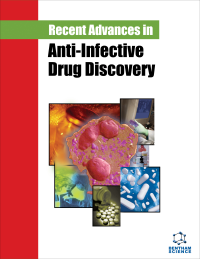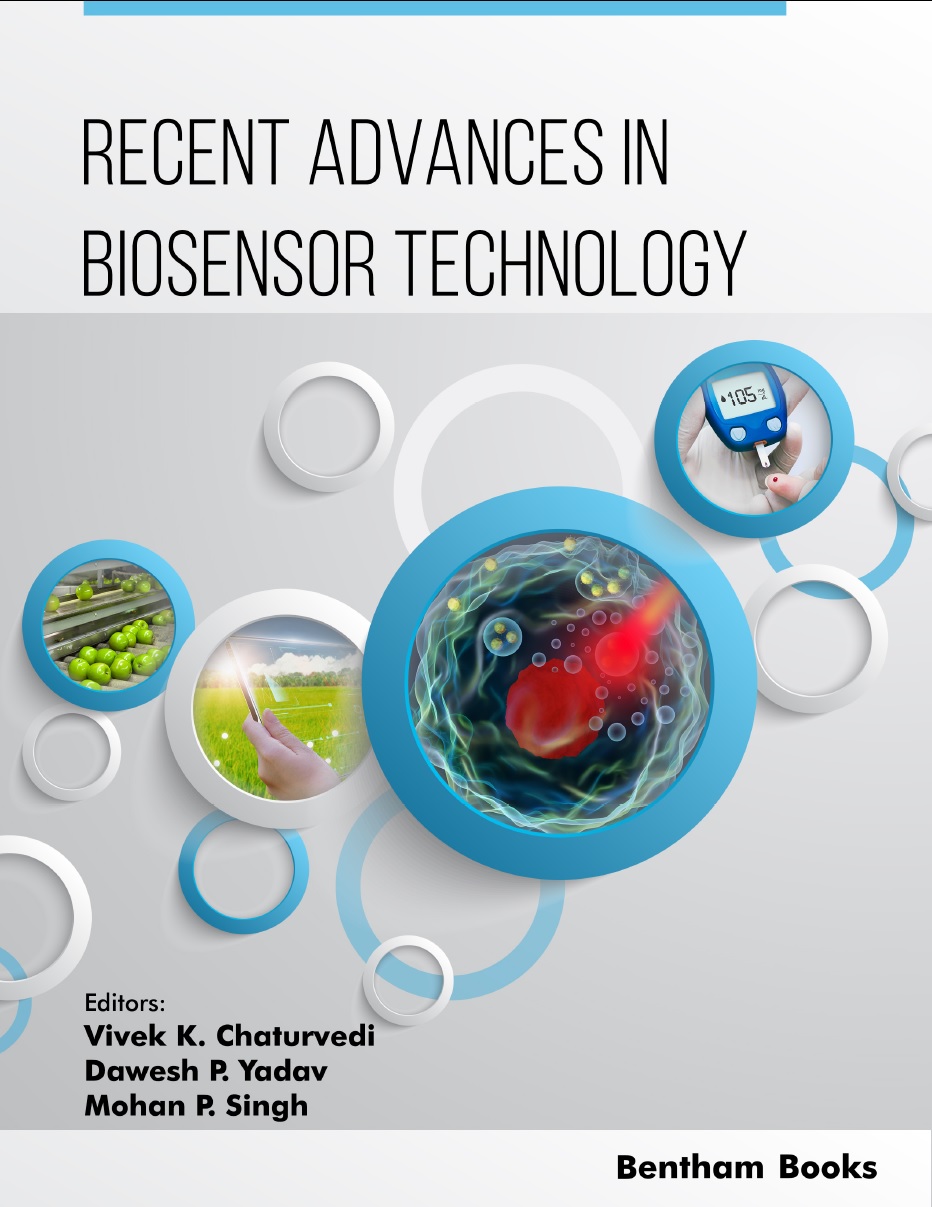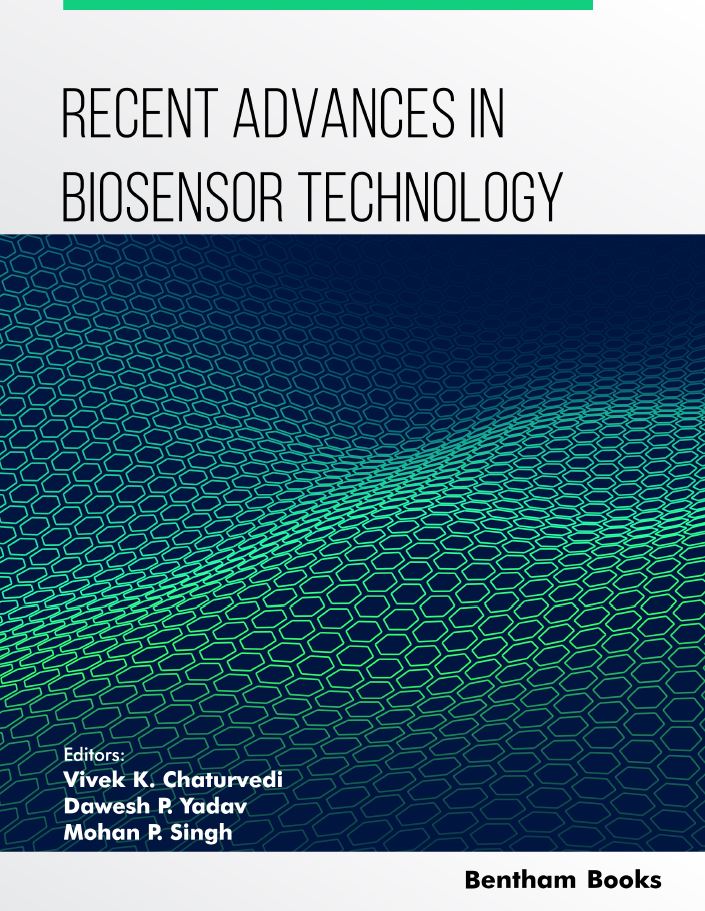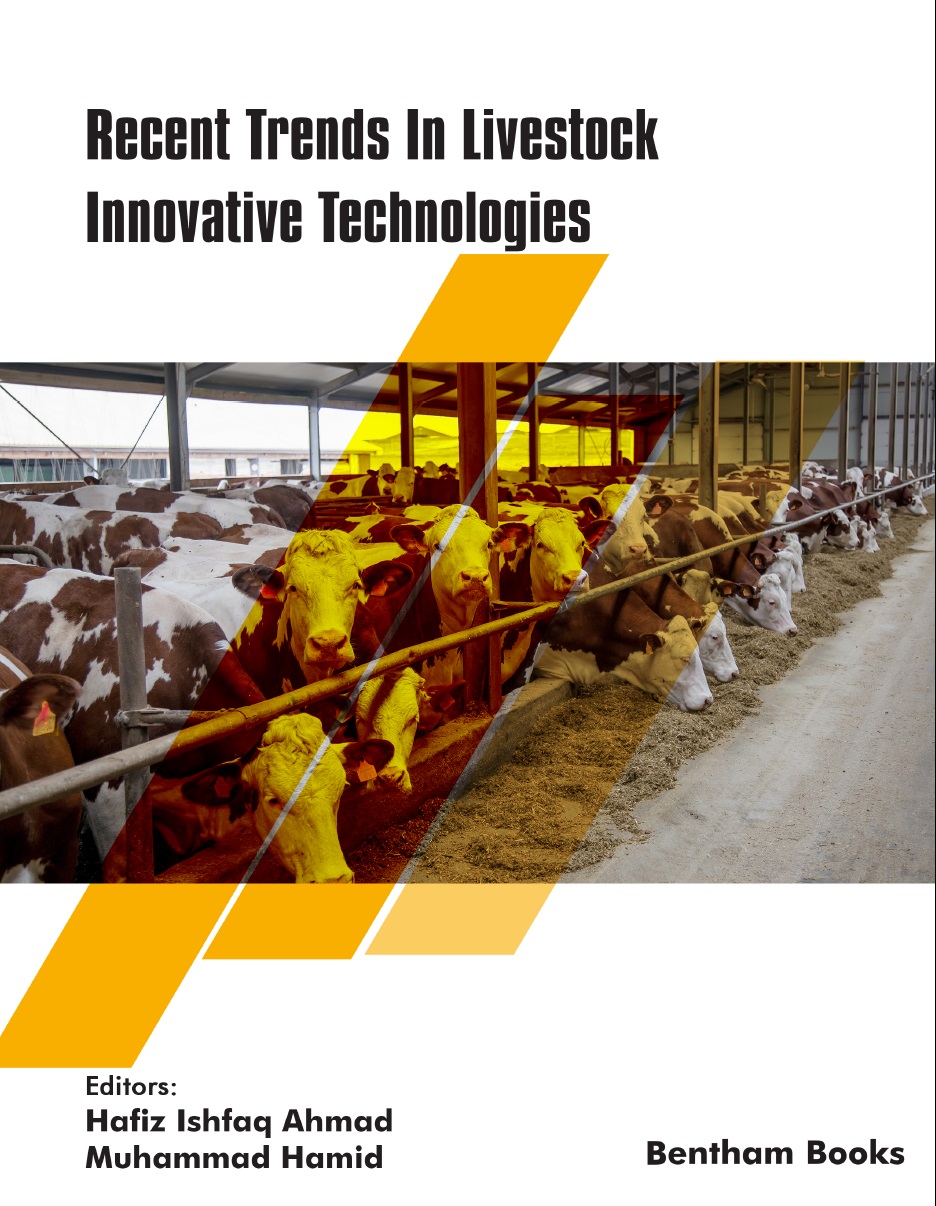- Home
- Publishers
- Bentham Science Publishers
Bentham Science Publishers
Bentham Science Publishers is a major publisher of more than 100 peer-reviewed science, technology and medical (STM) journals, along with a rapidly growing collection of eBooks. Since 1993, Bentham Science Publishers has been catering to the information needs of the pharmaceutical, engineering, biomedical and medical research community.601 - 650 of 812 results
-
-
Oxygen Atom Transfer Reactions
CHEMICAL REACTION MECHANISMS Mechanisms of Oxidation Reactions: Volume 1
More LessThis book introduces readers to the fundamentals of oxygen atom transfer reactions. It also gives mechanistic insights into the redox processes occurring through the oxygen atom transfer reactions. It also includes information about catalytic activation of oxygen through enzymes and oxo-metallic complexes. All topics are explored in separate chapters. Key features: - reviews the basic mechanisms in redox processes involving oxo-atom transfer reactions. - presents progress in the biomimetic activation of dioxygen related to the catalytic oxidations by synthetic metal organic complexes. - covers an important class of metal-organic compounds - nickel-oxygen species - generated in catalytic oxidation processes as oxygen atom transfer agents. - explains the mechanistic aspects of the heterogeneous photochemical redox processes via oxo-atom transfer reactions - provides references for further reading It is a reference for both professional scientists in the fields of chemistry, biology and applied sciences, and for graduate and undergraduate students interested in understanding reaction mechanisms involving oxygen.
-
-
-
Oxygen: High Enzymatic Reactivity of Reactive Oxygen Species
More LessThis book presents information about the high enzymatic reactivity of reactive oxygen species. Chapters in the book cover several aspects of the topic such as the sources, formation mechanisms, reaction centers, oxidation-reduction reactions, cellular respiration chemistry, enzymatic kinetics, mitochondrial and plastid electron transport chains, oxidation-reduction potential, reaction constants, reaction velocity and reaction mechanisms involved, cellular cytotoxicity, antioxidant defense mechanisms in plants and animals, response of plants to conditions of environmental stress, xenobiotics, and the thermodynamics inherent to oxygen metabolism. The book also features a chapter on flavonoids which highlights a paradoxical facet of the affinity of reactive oxygen species for enzymes. Flavonoids are mainly antioxidant molecules as they act as trappers of reactive oxygen species. The chapter informs readers about the metabolic pathways mediated by enzymes through wich flavonoids become promoters of these same reactive oxygen species. All chapters present the subject in a simple, analytical format, while highlighting the scientific evidence gathered by researchers so far. The volume is an interesting reference for scholars learning about the biochemistry and enzymology of oxygen and its free radical derivatives.
-
-
-
Parasitic Weeds of Jordan: Species, Hosts, Distribution and Management - Part I: Root Parasites; Orobanchaceae, Santalaceae & Cynomoryaceae
More LessThis book introduces the most recent research findings on selected parasitic weeds that occur in Jordan and are also spread in Middle Eastern countries. It is a valuable source of information for researchers, students as well as farmers, giving readers a better understanding of these regional parasites and their unusual growth patterns. The book set consists of two volumes. The first volume includes information about genera which are typically known as root parasites. These genera are Orobanchaceae, Santalaceae, and Cynomoriaceae families. The second volume covers stem parasites of the Cuscutaceae, Loranthaceae and Viscaceae families. The detailed information presented in this set makes this an essential reference on weeds and parasitic plants in Jordan and Middle Eastern regions.
Key Features:
- Chapters cover the biology, ecology, distribution, economic significance, host ranges, and control methods of a variety of regional weeds in an organized way
- It includes information on parasitic families, genera and species that are found in Jordanian flora and their hosts.
- It also provides coloured photos of weeds - Presents the latest techniques for plant pest management
- Provides references for further reading - Includes a glossary and appendix suitable for beginners
-
-
-
Passive Location Method Based on Phase Difference Measurement
More LessPassive Location Method Based on Phase Difference Measurement presents groundbreaking information for developing passive positioning technologies. The author has put forward a series of innovative solutions from the perspective of engineering application theory with the aim of giving a basic understanding of the application of unambiguous phase difference localization techniques for long-range passive detection.
On the basis of the existing linear solution of the double basis path difference positioning equation and the analysis of its intrinsic properties, this book starts from the study of the phase difference measurement method of the phase difference change rate, puts forward the concept of the differential function of the path difference per unit wavelength length and also discovers its jump law. It provides a possible way to solve the problem of unambiguous phase difference measurement. These results are of great significance to the development of passive localization techniques based on unambiguous phase difference measurement.
Key Features:
- Sequentially presents theoretical frameworks to build the readers knowledge for better understanding the topics
- Presents a variety of unique method for solving kinematic positioning parameters and Doppler signal parameters by using unambiguous phase difference measurement.
- Presents a variety of direction-finding and ranging methods based on short baseline array and using unambiguous phase difference measurement technology, and exhibits the method of constructing long baseline two-station direction finding and ranging with short baseline array
- Presents a variety of two-station passive positioning methods based on angle measurement which are beneficial to improve the positioning accuracy on the basis of studying the relationship between the phase difference and angle
- Presents the means to convert Doppler detection to the non-fuzzy phase difference measure, for the localization problem in which it is difficult to use the phase difference localization equation directly, since the accuracy of the phase difference measurement is better than that of the Doppler frequency difference
- Presents a variety of new positioning methods and several novel concepts while demonstrating the theoretical exploration of passive location problem based on unambiguous phase difference measurement
This reference is a resource for scholars, engineers and technicians involved in radio positioning research and the improvement of radar, satellite navigation systems, unmanned systems and Internet of Things infrastructure.
-
-
-
Pathways to Green Nanomaterials: Plants as Raw Materials, Reducing Agents and Hosts
More LessPathways to Green Nanomaterials: Plants as Raw Materials, Reducing Agents and Hosts is a comprehensive guide that explores the fundamental aspects, synthesis methods, and various applications of nanomaterials derived from plants. This book is designed for postgraduate researchers, engineers, and scientists in the fields of materials science, biotechnology, and chemical engineering, as well as other disciplines involved in nanomaterial production and applications.
The book delves into different plant-mediated nanomaterials, analyzing their synthesis mechanisms and discussing the regulation and application prospects of plant synthesis. It covers topics such as nanocellulose, biochar materials, plant exosomes, polyphenol nanoparticles, and the phytotoxicity and uptake of nanomaterials by plants. Additionally, it explores the research progress and applications of plant virus nanoparticles in the medical field, including drug delivery, molecular imaging, and vaccine preparation. Readers will be familiarized with the synthetic methods, characterization, and applications of green nanomaterials, paving the way for future studies on plants and their phytochemical constituents.
With its comprehensive coverage of plant-derived nanomaterials and their diverse applications, Pathways to Green Nanomaterials: Plants as Raw Materials, Reducing Agents and Hosts serves as a valuable resource for researchers seeking to understand the potential of plants as sustainable sources for nanomaterial production.
-
-
-
Pediatric Anesthesia: A Guide for the Non-Pediatric Anesthesia Provider Part I
More LessPediatric Anesthesia: A Guide for the Non-Pediatric Anesthesia is a comprehensive, contemporary reference that addresses all aspects of pediatric anesthesia. Both students and medical practitioners – novice and experienced - will find invaluable educational and practical information in this book. The book covers the subject in two parts.
Part I covers basic information about pediatric and neonatal anatomy and physiology, pharmacology, emergency room and operating room procedures and surgery. Chapters on general anesthetic procedures in emergency rooms, operational theatres and common surgeries.
Part II covers advanced topics for practicing healthcare professionals which include anesthesia for patients with a range of common and uncommon comorbidities, considerations for critically-ill patients, genetic disorders, pain management, COVID-19 guidelines for anesthesia, patient safety and research.
Key features:
- Basic and advanced information about pediatric and neonatal anesthesia covered in 25 chapters over two parts
- Simple and organized presentation for learners
- Contributions by expert clinicians and researchers
- Special topics included such as considerations for patients with comorbidities and genetic disorders
- References for further reading
- Detailed illustrations and tables
The text is an essential reference for scholars and professionals affiliated with general anesthesiology and surgery specialties at all levels who want to understand anesthesia for pediatric patients.
-
-
-
Pediatric Anesthesia: A Guide for the Non-Pediatric Anesthesia Provider Part II
More LessPediatric Anesthesia: A Guide for the Non-Pediatric Anesthesia is a comprehensive, contemporary reference that addresses all aspects of pediatric anesthesia. Both students and medical practitioners - novice and experienced - will find invaluable educational and practical information in this book. The book covers the subject in two parts.
Part I covers basic information about pediatric and neonatal anatomy and physiology, pharmacology, emergency room and operating room procedures and surgery. Chapters on general anesthetic procedures in emergency rooms, operational theatres and common surgeries.
Part II covers advanced topics for practicing healthcare professionals which include anesthesia for patients with a range of common and uncommon comorbidities, considerations for critically-ill patients, genetic disorders, pain management, COVID-19 guidelines for anesthesia, patient safety and research.
Key features:
- Basic and advanced information about pediatric and neonatal anesthesia covered in 25 chapters over two parts
- Simple and organized presentation for learners - Contributions by expert clinicians and researchers
- Special topics included such as considerations for patients with comorbidities and genetic disorders
- References for further reading
- Detailed illustrations and tables The text is an essential reference for scholars and professionals affiliated with general anesthesiology and surgery specialties at all levels who want to understand anesthesia for pediatric patients.
-
-
-
Perhalopyridines: Synthesis and Synthetic Utility
More LessHalogenated pyridines can be used as interesting starting materials in a wide range of organic synthesis methods. Substituted pyridine compounds are used generally as starting materials in the nucleophilic substitution reactions and have unique scaffolds for the construction of other heterocyclic and macrocyclic compounds. They also have important medicinal properties. Due to synthetic difficulties in the synthesis of the highly substituted pyridine derivatives from pyridine itself, perhalopyridines have a special importance in this regard. This book covers the synthetic reactions and applications of perhalopyridines. An introductory chapter introduces the reader to the physical and chemical properties of halopyridines, followed by 3 chapters which focus on pentafluoropyridine, pentachloropyridine and pentabromopyridine, respectively. The focused chapters provide information about synthetic methods and relevant nucleophilic reactions for each of the listed perhalopyridines and their derivatives. The book is a quick reference on perhalopyridines for students of applied chemistry, organic chemistry and chemical engineering.
-
-
-
Perinatal Cardiology-Part 1
More LessIn Perinatal Cardiology, fetal cardiology experts provide key information on tools for fetal evaluation through echocardiography / cardiac ultrasonography, with a primary focus on the nature and prenatal detection of structural and functional cardiac heart defects (CHDs). In this two-part book, readers will find details about different types of fetal cardiac abnormalities along with important updates on the diagnosis, management, planning delivery, and postnatal treatment in CHD cases. This information is supplemented with guidelines for the clinical management of patients with a fetus affected by cardiovascular defects, and surgical procedures in neonates.
Key Features:
-presents information gathered by experts in perinatal cardiology, organized into 26 topic-based chapters
- explores the cardiac development, fetal cardiovascular hemodynamics, genetic and environmental factors associated with congenital heart defects (CHD), perinatal management, planning delivery, and postnatal treatment of newborns with CHD
- presents information about normal cardiac functions and heart defects to give readers a clear and detailed picture of abnormal cardiac function
- presents information about perinatal ultrasound physiology
- gives practical guidelines for ultrasound and echography parameters required for evaluating fetal heart anatomy and diagnosing diseases
- includes a new system of classifying prenatal CHDs based on the stratification of the risk level of care
- features a straightforward and accessible style of presentation suitable for all readers
- provides references in each chapter for further reading
Part 1 of this two-part set covers the basics of perinatal cardiology which chapters that introduce readers to CHD classification, fetal heart and placental physiology and pathology, diagnosis of fetal cardiac malposition and anomalies and some congenital heart defects such as septal defects, cardiac anomalies of the left and right sides, conotruncal anomalies and aortic arch anomalies.
Perinatal Cardiology is an essential reference for postgraduate medical students seeking to improve their knowledge of fetal and pediatric cardiology as part of their residency and professional training. The book equips readers with the information necessary to understand the role of the perinatal cardiologist and goes further to facilitate the ability to perform adequate risk assessments for fetal CHD.
-
-
-
Perinatal Cardiology-Part 2
More LessIn Perinatal Cardiology, fetal cardiology experts provide key information on tools for fetal evaluation through echocardiography / cardiac ultrasonography, with a primary focus on the nature and prenatal detection of structural and functional cardiac heart defects (CHDs). In this two-part book, readers will find details about different types of fetal cardiac abnormalities along with important updates on the diagnosis, management, planning delivery, and postnatal treatment in CHD cases. This information is supplemented with guidelines for the clinical management of patients with a fetus affected by cardiovascular defects, and surgical procedures in neonates.
Key Features:
-presents information gathered by experts in perinatal cardiology, organized into 26 topic-based chapters
- explores the cardiac development, fetal cardiovascular hemodynamics, genetic and environmental factors associated with congenital heart defects (CHD), perinatal management, planning delivery, and postnatal treatment of newborns with CHD
- presents information about normal cardiac functions and heart defects to give readers a clear and detailed picture of abnormal cardiac function
- presents information about perinatal ultrasound physiology
- gives practical guidelines for ultrasound and echography parameters required for evaluating fetal heart anatomy and diagnosing diseases
- includes a new system of classifying prenatal CHDs based on the stratification of the risk level of care
- features a straightforward and accessible style of presentation suitable for all readers
- provides references in each chapter for further reading
Part 2 of this two-part set delves into different fetal anomalies such as ventricular inflow anomalies, myocardial and pericardial diseases, cardiac tumors, extra-cardiac conditions, cardiac failure, and environmental factors associated with CHD. The latter chapters cover clinical topics such as labor management for patients bearing a child with CHD, fetal cardiac interventions, clinical management of neonates with CHD and postnatal surgery.
Perinatal Cardiology is an essential reference for postgraduate medical students seeking to improve their knowledge of fetal and pediatric cardiology as part of their residency and professional training. The book equips readers with the information necessary to understand the role of the perinatal cardiologist and goes further to facilitate the ability to perform adequate risk assessments for fetal CHD.
-
-
-
Personalized Immunotherapy for Tumor Diseases and Beyond
More LessThis book introduces personalized immunotherapy with multi-dimensional models of analysis to determine the best plan for immunotherapy of patients. The book introduces readers to some basic concepts which lay the foundation for personalized immunotherapy: the development of a major histocompatibility complex (MHC), the genome profile of T cells and tumor cells, and genome-wide association studies. Chapters also cover special topics such as new immunoassay methods related to personalized immunotherapy and targeted immunotherapy which are geared towards familiarizing readers with current research practices. Focusing on the central theme of personalized immunotherapy, the authors provide a wealth of information about T-cell screening, tumor neoantigen cloning, primary tumor cell culture for T-cell cloning, bioinformatics strategies for understanding T-cell and primary tumor cell biology and function, and new developments in research on adoptive T-cell immunotherapy. These developments include T-cell gene therapy and T-cell gene editing, transgenic T-cells for increasing affinity to tumor cells such as CAR T-cells and TCR T-cells, and the systematic modeling of polyclonal specific T-cells and biobank technology.
Key Features:
- Introduces readers to basic concepts in personalized medicine and immunotherapy
- Presents current information about immunological assays used in research
- Presents an overview of T cell immunotherapy and cloning techniques
- Presents an overview of tumor cell bioinformatics and its role in immunotherapy
- Includes new developments and references for personalized immunotherapy techniques (T-cell gene therapy and T-cell gene editing, transgenic T-cells which target CAR T-cells and TCR T-cells, and polyclonal T-cell modeling)
- Includes a section on biobanking
- Presents information in an easy-to-read format for a wide range of readers
- Brings contributions from experts with over 30 years of experience in personalized immunotherapy
Personalized Immunotherapy for Tumor Diseases and Beyond is an ideal handbook for medical professionals and students involved in personalized medicine, immunology and oncology. General readers interested in the new developments in these fields will also benefit from the information provided.
-
-
-
Pharmaceutical Chemistry and Production: An Introductory Textbook
More LessThis textbook summarizes preliminary knowledge of bioactive molecules which serve as pharmaceuticals, their use, synthesis and mode of action, as well as the production of commercial constituents such as ethanol, citric acid, antibiotics, amino acid, and vitamins.
The text is written mainly for the undergraduate and graduate levels of study of all Indian universities according to the recently implemented CBCS curriculum in a simple manner while keeping postgraduate course structures in view.
Key Features:
Simple structured layout suitable for learners
- Considers the CBCS curriculum for Indian Institutions
- Covers the subject in 2 parts (Part A: Pharmaceutical Chemistry, Part B: Production)
- Covers several types of pharmaceuticals used in clinical practice
- Covers the fermentation process and the production of antibiotics, pharmaceutical commodities, and nutrients
- Includes an appendix for handy information
-
-
-
Pharmaceutical Nanotechnology
More LessPharmaceutical Nanotechnology publishes original manuscripts, reviews, thematic issues, rapid technical notes and commentaries that provide insights into the synthesis, characterisation and pharmaceutical (or diagnostic) application of materials at the nanoscale. The nanoscale is defined as a size range of below 1 µm. Scientific findings related to micro and macro systems with functionality residing within features defined at the nanoscale are also within the scope of the journal. Manuscripts detailing the synthesis, exhaustive characterisation, biological evaluation, clinical testing and/ or toxicological assessment of nanomaterials are of particular interest to the journal’s readership. Articles should be self contained, centred around a well founded hypothesis and should aim to showcase the pharmaceutical/ diagnostic implications of the nanotechnology approach. Manuscripts should aim, wherever possible, to demonstrate the in vivo impact of any nanotechnological intervention. As reducing a material to the nanoscale is capable of fundamentally altering the material’s properties, the journal’s readership is particularly interested in new characterisation techniques and the advanced properties that originate from this size reduction. Both bottom up and top down approaches to the realisation of nanomaterials lie within the scope of the journal.
-
-
-
Pharmaceuticals for Targeting Coronaviruses
More LessThis reference summarizes information about pharmaceuticals that can target infectious strains of coronaviruses to neutralize infections. Chapters focus on SARS-CoV-2, drug discovery methods and natural methods to combat the virus, which is a causative agent of COVID-19.
Specifically, the book presents 5 chapters written by expert scholar on the following topics:
Structure-Based Drug Discovery Approaches Applied to SARS-CoV-2 (the causative agent COVID- 19)
Potential Antiviral Medicinal Plants against Novel SARS-CoV-2
Infections Caused by SARS Coronaviruses:
Main Characteristics, Targets and Inhibitors Natural Sourced Traditional Indian and Chinese Medicines to Combat COVID- 19
Peptidomimetic and Peptide-Derived Agents Against 3CLpro from Coronaviruses The book contents present both conventional drug design and traditional approaches to discovering relevant drugs in an easy-to-read approach, which is supplemented by bibliographic references. It is intended as a reference for students (pharmacology, pharmacy) and researchers (virology) who are seeking information about antiviral drugs that can be used against coronaviruses.
-
-
-
Pharmacological and Molecular Perspectives on Diabetes
More LessPharmacological and Molecular Perspectives on Diabetes is a compilation of reviews on clinical and scientific aspects of diabetes mellitus. It presents 11 contributions by eminent scholars that give the reader rational pharmacological and genetic perspectives of the disease and its treatment. The reviews approach diabetes from different angles, and highlight research that has been done to understand some questions about the molecular biology of diabetes in experimental settings. Topics of clinical significance such as the use of different hypoglycemic agents, and diabetic complications in clinical settings are also covered.
Topics included in this book are:
- Epigenetic alterations and type 2 diabetes mellitus
- Responses to nutritional chromium supplements for type 2 diabetes mellitus
- Endocrine role of osteocalcin in homeostatic regulation of glucose metabolism
- Effect of diabetes on memory
- Osteoarthritis in relation to type 2 diabetes mellitus: prevalence, etiology, symptoms and molecular mechanism
- Infection of novel coronavirus in patients with diabetes mellitus
- Role of an anti-inflammatory agent in the management of type 2 diabetes mellitus
- Role of antidiabetic agents which helps regulates TCF7L2 variations in type 2 diabetes mellitus
- Relationship between type 2 diabetes mellitus, PCOD and neurological disorders: role of antidiabetic drugs Comparison of different types of insulin available for type 1 diabetes treatment
- Circadian rhythm disruption: special reference to type 2 diabetes mellitus
- Type 2 diabetes mellitus and its complications: pharmacogenetics based correlations and circulating microRNA as biomarkers Pharmacological and Molecular Perspectives on Diabetes should prove to be of interest to all pharmaceutical and molecular biology scientists who are involved in research in anti-diabetic drug design and discovery, and practicing endocrinologists who wish to keep abreast of recent developments in the field.
-
-
-
Pharmacotherapeutic Management of Cardiovascular Disease Complications: A Textbook for Medical Students
More LessPharmacotherapeutic Management of Cardiovascular Disease Complications is an essential textbook that comprehensively informs the reader about a broad variety of cardiovascular pathologies and their management through drug therapy.
Key Features:
- Features 22 chapters, with 17 chapters dedicated to the management of a wide range of cardiomyopathies and related complications
- Introduces readers to heart anatomy and physiology, for both medical and pharmacology students
- Covers information on cardiovascular disease biomarkers as well as current and new technologies for diagnostic procedures
- Provides additional information on different aspects of cardiovascular disease treatment including etiological factors, prevalence, pathogenesis, clinical symptoms, diagnosis and prevention factors, risk screening and complications
- Informs readers on the role of the clinical pharmacist in patient lifestyle modification for therapeutic plans, helping to reduce cardiovascular disease burden in clinical practice
The broad coverage and easy-to-read organization of the topics covered on the subject make this textbook an ideal reference for medical students and health care professionals such as doctors, nurses, clinical pharmacists, community pharmacists and paramedics.
-
-
-
Photonic Materials: Recent Advances and Emerging Applications
More LessIn this book, scientists present the latest trends and research in the broad field of photonics and photonic materials applications. The 14 chapters are categorized into tracks that give a snapshot of the field including basic sciences (photonics, plasmonics, advanced optics, nanophotonics) and applications (renewable energy, fiber-optics, lasers and smart materials). The book starts with a summary of recent developments in photonic crystal (PC) applications. This introduction is followed by chapters that present design concepts and investigations of PC devices such as: - All-optical XOR gates using 2D photonic crystals - One-dimensional PCs containing germanium (Ge). - Graphene surface plasmonics - Nanophotonics and fiber-optic lasers - Chalcogenides - Bragg Fibers and more The broad range of topics make this an informative source on current and exciting photonics research, and the variety of photonic materials. It serves as a reference for graduate scholars (in physics and materials science) and allied researchers who have a keen interest in photonics.
-
-
-
Photophysics of Supramolecular Architectures
More LessThis reference provides collective information about the physical and photophysical changes of supramolecules after encapsulation. It covers luminescent systems involving a range of host molecules such as calixarenes, cyclodextrin, resorcinanene-crowns, pillararenes, cucurbituril, and metallacycles. Chapters also discuss the effect of the macrocyclic environment on the properties of functionalized molecules, including the variations in folding and unfolding patterns. Each chapter is supplemented with detailed references, making this an ideal resource for scholars interested in supramolecular photophysics.
-
-
-
Physics Education for Students: An Interdisciplinary Approach
More LessPhysics Education for Students: An Interdisciplinary Approach is a compilation of reviews that highlight new approaches and trends in teaching and learning specific topics on physics to high school and university students. The reviews cover different areas of physics education (laboratory activities, mathematics, philosophy and history) and the ways that learning outcomes can be improved. These distinguished areas can generate complexities and difficulties for students in learning some concepts since the same topics are often presented while following approaches that do not highlight the existing correlations among the involved disciplines. The reviewers discuss an integrated framework for readers with the objective to promote the inclusion of specific laboratory activities and mathematics contents for physics courses addressed to university students, with evidence of the importance of combining a historical and philosophical approach as well. Specific topics in this book include the benefits of active learning in physics education, dialogic best practices in science education, research-based proposals on optical spectroscopy in secondary schools, didactic principles and e-learning in physics and expansive framing in physics laboratories.
Physics Education for Students: An Interdisciplinary Approach, with its selection of expert reviews is an interesting read for academics and researchers involved in STEM education, at the school or college level.
-
-
-
Phytonutrients in the Treatment of Gastrointestinal Cancer
More LessGastrointestinal cancer is one of the most prevalent causes of cancer-related deaths in the world. Recent research demonstrates that phytochemicals are critical in preventing and managing gastrointestinal cancer. The increased intake of phytochemicals could reduce the risk of cancer by inhibiting cancer cell proliferation, inducing apoptosis and autophagy, and suppressing angiogenesis as well as cancer cell metastasis. These mechanisms are also known to counter Helicobacter pylori infection and modulate gut microbiota. There is preliminary data suggesting that daily supplementation with high doses of certain vitamins combined with conventional therapeutic agents may enhance their growth inhibitory effects on tumor cells and protect normal tissues against some of their toxic effects. This book attempts to fill gaps on the role of phytonutrients in the treatment of cancer in the gastrointestinal tract (GIT). It discusses the action of individual vitamins on cellular and molecular parameters and describes how vitamins inhibit protein kinase C activity, increase the production of certain growth factors, and modulate the expression of a number of oncogenes. The book is divided into 2 parts. The first part summarizes the pathophysiology of GIT cancers and introduces readers to anticancer phytonutrients. A chapter on the status of FDA approved nutraceuticals rounds up this section. The second part of the book provides a systematic review on the different plant derived chemicals that can be used to treat GIT cancer. Each chapter in this section focuses on a specific type of phytochemical agent and its molecular mechanisms relevant to the disease. This book will give the reader a holistic view of gastrointestinal cancer treatment and the value of natural compounds in developing functional food and drugs for preventive medicine.
-
-
-
Plant Mediated Synthesis of Metal Nanoparticles
More LessThis book provides valuable knowledge about environmentally friendly methods of nanoparticle synthesis. The contents present information about the subject from synthesis, characterization, advantages, disadvantages, route of administrations up to effects of drug combinations.
Starting with an introduction to the concept of green nanoparticles, the book summarizes different types of plant extracts and their components. Green methods for preparing nanotherapeutic agents utilizing algae and marine plants to synthesize metal based nanoparticles are also explained. The book also places an emphasis on the improvement of metal nanoparticle formulations with polymers for antibacterial applications. A detailed review of the interaction of nanoparticles with or without drugs rounds the contents, with a guide to easily understand their site of action along with suitable reactions in the body.
This book is a primer on nanoparticle synthesis for pharmacology or nanomedicine programs that focus on sustainable and environmentally friendly methodologies for synthesizing therapeutics.
-
-
-
Plant-derived Hepatoprotective Drugs
More LessPlant-derived Hepatoprotective Drugs is a comprehensive guide that explores the world of medicinal plants and their hepatoprotective properties, offering both basic and applied insights for scholars and hepatology residents. Structured chapters provide a deep dive into the subject, while referencing relevant research and future perspectives. Readers will learn the science behind hepatotoxicity and the role of plants in safeguarding liver health. The book also helps researchers to explore bioactive compounds extracted from plants, along with herbal formulations that contribute to hepatoprotection, and conveys an understanding of the effects of edible plants and spices on liver wellness. A chapter focusing on isolation and characterization of phytochemicals bridges theory and application for discovering and developing hepatoprotective biopharmaceuticals. Key Features: Gives a thorough understanding of hepatotoxicity and related bioactive compounds Comprehensive references to enhance understanding Well-structured chapters providing organized knowledge Basic and applied information for diverse readers Future perspectives offering a glimpse into ongoing research This is an ideal reference for pharmacology scholars and residents in hepatology, as well as readers interested in nature's potential in promoting liver health.
-
-
-
Potential Health Benefits of Biologically Active Peptides Derived from Underutilized Grains: Recent Advances in their Isolation, Identification, Bioactivity and Molecular Analysis
Frontiers in Bioactive Compounds: Volume 4
More LessThis volume is a complete review of the cutting-edge scientific evidence about the isolation, identification, bioactivity and molecular analysis of the biologically active peptides (BAPs) obtained from several underutilized grains. It provides a general review of current and new technologies in isolating and bioprospecting BAPs before going into the details of 11 grains. Amaranth, quinoa, millet, buckwheat, sorghum, lupin, mung bean, chickpea, broad bean, cocoa bean and chia are extensively discussed in dedicated chapters. Additionally, these chapters provide information about the characteristics of the crop, its main varieties, traditional uses, economic importance, nutritional aspects, structure and chemical composition of the grains, as well as the classification and distribution of the grain protein fractions. Moreover, the advances in the analytical techniques used for the concentration, purification and molecular characterization of BAPs are described. The impact of BAPs in the promotion of health is highlighted, as well as their potential incorporation as promising ingredients in the development of functional foods, nutraceuticals and cosmeceuticals. Finally, the main findings related to the potential antiviral and anti-COVID-19 activities of BAPs derived from underutilized grains are described. This reference will be of interest for academics, professionals and researchers focused in food science, biotechnology, pharmacology and agriculture, and to professionals involved in the research and development of natural products, pharmaceuticals and cosmeceuticals.
-
-
-
Practical Biochemistry
More LessPractical Biochemistry provides both foundational knowledge and advanced insights into biochemistry, including the basic compounds, and laboratory methods. The book is designed for students and academic professionals seeking a comprehensive understanding of the practical aspects of the subject.
The book is systematically divided into five sections, each dedicated to a specific category of macromolecules and related biochemical techniques: 1) Carbohydrates, 2) Proteins, 3) Nucleic acids, 4) Lipids, 5) Supplementary Techniques and Safety Data Sheet (SDS). Each chapter within these sections is structured to provide a thorough understanding of the aim, principles, procedures, and practical applications of biochemical techniques.
Key features:
· Comprehensive Information: meticulously organized and structured chapters provide a thorough and methodical approach to learning
· Additional Learning Tools: Did You Know' segments and Viva Voice' questions enrich the learning experience by offering interesting facts and stimulating critical thinking
· Practical Focus: Step-by-step guides aid readers in understanding and applying the techniques in the lab
· Safety and Accuracy: teaches how to conduct safe and accurate experiments with precautions
· Accessible Language: simple and lucid language helps beginners to understand complex biochemical concepts
-
-
-
Practical Handbook of Thermal Fluid Science
More LessPractical Handbook of Thermal Fluid Science is an essential guide for engineering students to practical experiments and methods in fluid mechanics. It presents the topic of practical fluid physics in a simple, clear manner by introducing the fundamentals of carrying out experiments and operational analysis of systems that are based on fluid flow. The information enables readers to relate principles in thermal fluid science with the real world operation of important instruments that greatly impact our daily life, such as power generators, air conditioners, refrigerators, engines, flow meters, airplanes, among others. Key Features: - A simple organized chapter layout that focuses on fundamental and practical information about thermal fluid science experiments and equipment - Provides an introduction to essential knowledge for analysis and evaluation of practical systems and major inventions - Presents information about analysis of operating data for power plant efficiency - Detailed chapters for studying and testing wind tunnels, sphere heating/cooling, pipe flow, engines, and refrigerators/heat pumps are provided - Experimental data of Venturi and orifice plate flow meters are provided to show step by step calibration and experimentation. - Presents information on report preparation - Includes multiple appendices to consolidate practical information for readers for quick reference.
-
-
-
Practice and Re-emergence of Herbal Medicine
Natural Medicine: Volume 1
More LessPractice and Re-emergence of Herbal Medicine focuses on current research in Indian traditional medicine. Chapters cover many facets of herbal medicine, including quality control and experimental validation, intellectual property issues, pharmacovigilance and the therapeutic use of herbal medicine. The book informs readers about the effectiveness of traditional medicine systems, like Ayurveda and Siddha, in the region with reference to specific communities. The book also highlights herbal medications for diseases such as COVID-19, cancer and erectile dysfunction. The book is a timely reference for researchers interested in ethnobotany, alternative medicine and the practice of herbal medicine in indigenous communities. Series Introduction: Natural Medicine is a series of edited volumes that aims to be a repository of knowledge on herbal and traditional medicine with the goal of attracting a global audience. Contributions to the series will present evidence of the efficacy of plant-based medicine against disease. The series will also highlight issues in herbal medicine practice and research.
-
-
-
Pragmatic Internet of Everything (IOE) for Smart Cities: 360-Degree Perspective
More LessPragmatic Internet of Everything (IOE) has emerged as a powerful paradigm for representing and solving complex problems. This reference demonstrates how to coordinate behaviour among a collection of semi-autonomous problem-solving agents: how they can coordinate their knowledge, goals and plans to act together, to solve joint problems, or to make individually or globally rational decisions in the face of uncertainty and multiple, conflicting perspectives.
The book presents a collection of articles surveying several major recent developments in Pragmatic Internet of Everything (IOE). The book focuses on issues and challenges that arise in building IOE systems for smart cities in real-world settings. It also presents solutions to the issues faced by system architects. The synthesis of recent thinking, both theoretical and applied, on major IOE problems makes this essential reading for anyone involved in the design and planning of IOT systems for smart cities.
Key Features
- Summarizes available literature and practical ventures with references
- Merges different perspectives on IoT technology thereby giving a 360-degree perspective to the reader
- Gives some tips for implementation of practical ventures in this space
- Includes an analysis of information gathered from citizens of smart cities
-
-
-
Precision Medicine and Human Health
More LessPrecision Medicine and Human Health covers several aspects of precision medicine in 20 edited reviews by researchers and healthcare professionals. The breadth of information provided by the contributors aims to familiarize readers with basic and applied research in personalized therapy.
Starting with an overview of the subject and its relationship with epigenetics, the book progresses into advanced topics that explain its wider applications. The use of precision medicine in treating different diseases such as protein misfolding disorders, gut ulcers and their effect on the gut microbiome, cancer treatment (for hepatocellular carcinoma, breast cancer, and oral cancer), fibromyalgia, high altitude sickness, and multiple sclerosis is explained. The book also covers modern therapeutic techniques to administer personalized therapy, including epithelial-mesenchymal therapy (EMT), circadian clock modulation, and artificial intelligence and phytoconstituents. The next chapters cover advanced technologies that are crucial to precision medicine, such as nanomaterials and advanced drug delivery systems. A concluding chapter on the therapeutic use of tannins in precision medicine rounds up the contents.
Key Features:
- Features 20 focused chapters contributed by scientific experts
- Introduces readers to basic concepts in precision medicine
- Covers the application of precision medicine in treating different diseases
- Showcases several techniques used in experimental and clinical precision therapy
- Explains modern technologies in precision medicine
- Caters to a wide readership with introductions, structured headings, and references
This is an informative reference for healthcare professionals in clinics and hospitals and any scholar who wants to learn about basic and applied knowledge in precision medicine.
-
-
-
Prediction in Medicine: The Impact of Machine Learning on Healthcare
More LessPrediction in Medicine: The Impact of Machine Learning on Healthcare explores the transformative power of advanced data analytics and machine learning in healthcare. This comprehensive guide covers predictive analysis, leveraging electronic health records (EHRs) and wearable devices to optimize patient care and healthcare planning. Key topics include disease diagnosis, risk assessment, and precision medicine advancements in cardiovascular health and hypertension management.
The book also addresses challenges in interpreting clinical data and navigating ethical considerations. It examines the role of AI in healthcare emergencies and infectious disease management, highlighting the integration of diverse data sources like medical imaging and genomic data. Prediction in Medicine is essential for students, researchers, healthcare professionals, and general readers interested in the future of healthcare and technological innovation.
-
-
-
Predictive Analytics Using Statistics and Big Data: Concepts and Modeling
More LessThis book presents a selection of the latest and representative developments in predictive analytics using big data technologies. It focuses on some critical aspects of big data and machine learning and provides studies for readers. The chapters address a comprehensive range of advanced data technologies used for statistical modeling towards predictive analytics.
Topics included in this book include:
- Categorized machine learning algorithms
- Player monopoly in cricket teams.
- Chain type estimators
- Log type estimators
- Bivariate survival data using shared inverse Gaussian frailty models
- Weblog analysis
- COVID-19 epidemiology
This reference book will be of significant benefit to the predictive analytics community as a useful guide of the latest research in this emerging field.
-
-
-
Principles of Automation and Control
More LessPrinciples of Automation and Control is a concise textbook that explains the basics of robust automation and control strategies. It demonstrates the essentials for meeting consumer needs and ensuring cost-effective manufacturing processes without compromising product quality. With a focus on Industry 4.0, this book explores the principles and applications of automation in industrial systems, emphasizing efficiency, profitability, and flexibility. The thirteen chapters cover automated processes, control theory, computer control devices, industrial automation tools, and practical examples of system automation. The text uses a multidisciplinary approach with simple language to cater to the needs of readers at all levels (learners, beginner engineers, and professionals) seeking to expand their knowledge in automation and control theory and practice. Real-world case studies and empirical findings are also highlighted, which show how automated business solutions can enhance performance.
-
-
-
Principles of Qualitative Inorganic Analysis: Precipitation, Separation and Identification of Cations
More LessThis book provides notes for basic laboratory experiments in qualitative analysis of cations. The book introduces readers to basic methods and laboratory safety. Subsequent chapters cover six groups of cations. Each chapter explains important details that are required to understand how a particular analytical method works for detecting cations in samples, starting from sedimentation and ending with the identification.
Key Features:
- Simple, reader friendly format
- introductory notes and summary
- Covers several groups of metals
- Appendix for handy reference with tables and references
This is a useful textbook for early chemistry students and teachers as it equips the readers with sufficient information required to analyze chemical samples and deduce the presence of specific cations as part of laboratory coursework.
-
-
-
Probability and Statistics: Theory and Exercises
More LessProbability and Statistics: Theory and Exercises is a textbook focused on practical examples of probability theory and statistics, with the goal of giving readers a thorough understanding of mathematical relationships in these subjects. The book is designed for basic courses in probability and statistics, and is aimed primarily at non-specialists and beginner level students.
The book is divided into 2 sections, respectively.
Probability: Includes a primer on set theory, basic probability theory definitions and calculations, combinatorial analysis, random variables and distribution laws
Statistics: Covers basic concepts of descriptive statistics
Key features
- Simple, clear language for easy comprehension of key concepts
- Carefully chosen exercises with solutions for self-learning
- Over 40 Illustrations for clear explanations
- References for further reading and tutorials.
-
-
-
Probiotics in Anticancer Immunity
Frontiers in Cancer Immunology: Volume 3
More LessProbiotics have been suggested to be involved in both prevention and treatment of various human cancers. Probiotics in Anticancer Immunity is a set of volumes in the Frontiers in Cancer Immunology series that explains biochemical mechanisms of anticancer immunity exerted by probiotics in various human cancers. It presents edited chapters focused on the evidence of probiotic use against human cancers through several animal and human studies.
This volume of Probiotics in Anticancer Immunity consists of 11 chapters. The introductory chapters provide information about the link between gut microbiota and the host immune system in cancer and the general mechanisms of anticancer immunity exerted by probiotics. Subsequent chapters are focused on probiotics' anticancer immunity in specific cancers such as, skin cancer, stomach cancer, breast cancer, lung cancer, head and neck cancer, liver cancer, cervical and colon cancer.
Key features
- Gives a new dimensions and insight in the role of probiotics in anticancer immunity towards various human cancers
- Provides several color figures and tables to clearly explain relevant information
- Includes recent information with new insights and references
- Meets the needs of basic (pre-clinical) and advanced clinical researchers and postgraduate scholars
-
-
-
Progress in Green Economics
More LessGreen economics refers to the discipline in which economists and businesses pursue policies that are conducive to minimizing environmental and ecological damage and therefore sustainable development.
Progress in Green Economics primarily focuses on developments in the transition of different industries and sectors to a sustainable, environment-friendly economic model. The book presents 7 chapters that cover different topics that reflect these developments in the field from a number of academic and practical angles.
The topics covered in the book include a review of the Food Energy Water Waste (FEWW) paradigm in Asian countries, an analysis of green economic forces in the Arctic region, green economics for protected area tourism, a conceptual analysis of green economics strategy, sustainable development and green banking in South Africa, and six sigma methodology for implementing green economic policies in different industries. Each chapter is organized into reader-friendly sections and is supplemented with references for the benefit of more involved scholars.
The multi-regional perspectives, along with the theoretical and practical information on the topic make this reference a timely and handy resource on green economics and sustainable development for academics, scholars, industrialists, policymakers and economics enthusiasts alike.
-
-
-
Protective Material Coatings For Preserving Cultural Heritage Monuments and Artwork
More LessLong-standing artworks and monuments show the wisdom and cultural identity of an ancient society along with the educational, material and spiritual merits of the people of that time. However, many historical artifacts and cultural monuments have been eroded over time and are in danger of deterioration beyond repair. There is a need to protect and conserve these artifacts. Restoration and preservation requires a multidisciplinary understanding of the inherent properties of these works based on the type of material and sufficient information in the properties of protective and conservation materials and research methods.
Protective Material Coatings For Preserving Cultural Heritage Monuments and Artwork aims to familiarize students with the recent practices in conservation and restoration science in recent years by presenting a modern orientation on the subject focused on material coatings. Readers will be able to understand the properties of different materials in antique objects and how to adopt appropriate treatment methods based on these properties.
This book consists of 5 chapters. In the first chapter, materials analysis techniques are described for historical monuments along with coatings used to preserve them. The second chapter introduces the properties of metals, alloys, and their common corrosion and explains protection strategies for metal monuments. An emphasis is given to nanocomposite coatings to prevent decay, especially through electrochemical corrosion. Chapter 3 is devoted to studying natural leather and parchments and their conservation from damage by environmental factors such as UV radiation, temperature, and humidity. The fourth chapter deals with stone works, which are in many historical objects. Chapter 5 introduces the reader to additional preservation materials and innovative methods employed to protect historical monuments and cultural heritage sites. Information about the removal of materials, cleaning of improper prior repairs is also given.
Protective Material Coatings For Preserving Cultural Heritage Monuments and Artwork is an ideal book for students of archeology, architecture, materials science and contemporary arts courses who are required to learn about the techniques of preserving antique buildings and works of art. It also serves as a handy reference for professionals and general readers interested in the curation of museums and the conservation of buildings, and cultural heritage sites.
-
-
-
Protein and Peptide Letters
More LessProtein & Peptide Letters publishes short papers in all important aspects of protein and peptide research, including structural studies, recombinant expression, function, synthesis, enzymology, immunology, molecular modeling, drug design etc. Manuscripts must have a significant element of novelty, timeliness and urgency that merit rapid publication. Reports of crystallisation, and preliminary structure determinations of biologically important proteins are acceptable. Purely theoretical papers are also acceptable provided they provide new insight into the principles of protein/peptide structure and function.
-
-
-
Protocols used in Molecular Biology
More LessProtocols used in Molecular Biology is a compilation of several examples of molecular biology protocols. Each example is presented with a concise introduction, materials and chemicals required, a step-by-step procedure and troubleshooting tips. Information about the application of the protocol is also provided. The techniques included in this book are essential to research in the fields of proteomics, genomics, cell culture, epigenetic modification and structural biology. The protocols can also be used by clinical researchers (neuroscientists and oncologists, for example) for medical applications (diagnostics, therapeutics and multidisciplinary projects).
-
-
-
Psychological Assessment and Interventions for Individuals Linked to Radicalization and Lone Wolf Terrorism
More LessIn recent times, the phenomenon of lone wolf terrorism has been observed with the social assumption that a radicalized individual is only guided by personal, social, and ethnic reasons to commit an extremist act. Nevertheless, there is still much to understand about this phenomenon and improve the methods of investigation or psychiatric interventions. This handbook attempts to cover gaps in understanding the psychiatric aspects of radicalization and the phenomenon of lone-wolf terrorism. Edited by expert clinical psychologists, the contributors have taken both a qualitative and theoretical route to analyze the phenomenon, prompted by their clinical experience with mental health professionals, being in contact with radicalized people living in local towns and prisons.
Key Features
- Addresses the topic of lone wolf terrorism from multiple angles including psychological aspects, social aspects, philosophical aspects and prevention
- Provides insights into forensic psychiatric methods used to study terrorism
- Includes contributions from several mental health experts
- Explains information in a concise, easy to comprehend manner
- Includes references for further research
Psychological Assessment and Interventions for Individuals Linked to Radicalization and Lone Wolf Terrorism serves as a practical handbook for psychologists, psychiatrists, criminologists, social workers, allied professionals (such as law enforcement officers) and students (in criminology, social science or psychology programs for example) who want to learn about the causes and prevention of terrorism, with a focus on radicalization processes and lone wolf agents.
-
-
-
Public Transportation in Kenya (A Phenomenological Study of Transport Issues)
More LessPublic Transportation in Kenya provides an in-depth examination of the significant challenges faced by Kenya’s public transportation system, using a phenomenological approach to highlight the real-world experiences of commuters and stakeholders. The book addresses two primary goals: to explain the severe impact of transportation issues on millions of Kenyans, including loss of livelihoods, disabilities, and fatalities, and to propose solutions aimed at reducing road traffic accidents and improving overall transportation safety.
The chapters begin with a review of Kenya's transport studies and current state, followed by an analysis of road traffic accident data and contributing factors. Subsequent sections explore the inadequacies in infrastructure, traffic law and enforcement, and the challenges posed by incomplete data collection. The book also details an innovative study using data mining and natural language processing (NLP) on over one million traffic-related tweets to uncover commuter trends and driver behaviors. The final set of chapters presents comprehensive recommendations for improving road safety, enhancing infrastructure, and reforming policing practices to better manage traffic and transportation issues.
Key features of this book include the use of both structured and unstructured data for a robust analysis, practical solutions for policymakers, and an innovative methodological approach utilizing NLP and data mining to analyze the issues presented. References and summaries are also provided in each chapter to make information accessible. These elements make the book a valuable resource for researchers, academics, policymakers, transportation professionals, and anyone interested in the socio-economic impacts of public transportation in Kenya and other African countries.
Public Transportation in Kenya is essential reading for those looking to understand and address the critical transportation challenges that affect millions daily, providing insights and solutions that can lead to safer and more efficient transport systems.
-
-
-
Quick Guideline for Computational Drug Design (Revised Edition)
More LessBioinformatics allows researchers to answer biological questions with advanced computational methods which involves the application of statistics and mathematical modeling. Structural bioinformatics enables the prediction and analysis of 3D structures of macromolecules while Computer Aided Drug Designing (CADD) assists scientists to design effective active molecules against diseases. However, the concepts in structural bioinformatics and CADD can be complex to understand for students and educated laymen.
This quick guideline is intended as a basic manual for beginner students and instructors involved in bioinformatics and computational chemistry courses. Readers will learn the basics of structural bioinformatics, primary and secondary analysis and prediction, structural visualization, structural analysis and molecular docking. The book provides the reader an easy to read summary of the tools and techniques in structural bioinformatics as well as their limitations.
In this revised edition, the authors have updated information in a number of chapters with a specific focus on the section on protein structure visualization and evaluation. Additional information on protein-ligand interaction studies has also been provided in this new edition.
Therefore, the book is a useful handbook for aspiring scholars who wish to learn the basic concepts in computational analysis of biomolecules.
-
-
-
Radial Basis Function Methods For Large-Scale Wave Propagation
More LessThis book details the development of techniques and ideas from the radial basis function. It begins with a mathematical description of the basic concept of radial function method with chapters progressively delving into the derivation and construction of radial basis functions for large-scale wave propagation problems including singularity problems, high-frequency wave problems and large-scale computation problems. This reference, written by experts in numerical analysis, demonstrates how the functions arise naturally in mathematical analyses of structures responding to external loads. Readers are also equipped with mathematical knowledge about the radial basis function for understanding key algorithms required for practical solutions.
Key features:
- Introduces basic concepts of radial basis function methods
- Provides detailed derivations of several radial basis functions
- Explains complex problems using simple language
- Contains a wide range of numerical examples to demonstrate applications of relevant functions
- Combines the radial basis function with other known numerical methods (boundary element methods and differential equations).
- Includes references and appropriate chapter appendices
- Includes MATLAB codes for origin intensity factors and nearly singular factors for radial basis calculations
The book is designed to make information about radial basis function methods more accessible to research scientists, professional engineers and postgraduate students, with a specific focus on large-scale wave propagation problems.
-
-
-
Rare-Earth Metal Hexaborides: Synthesis, Properties, and Applications
More LessRare-earth hexaborides are a group of materials composed of octahedral boron units. They are useful for making advanced ceramics that have a wide range of industrial applications due to their low electronic work functions, hardness, refractory properties, low electrical resistances and specific thermal expansion coefficients.
Rare-Earth Metal Hexaborides: Synthesis, Properties, and Applications provides a quick reference on rare-earth metal hexaborides and their engineering applications. It provides a primer on rare earth elements followed by details of rare-earth hexaboride structures, synthetic methods, and information about their alloys and ceramic composites. References to scholarly research are also provided for assisting advanced readers.
This reference is a handy source of information for chemical engineering and materials science scholars, and anyone interested in the applied chemistry of rare-earth metals and borides.
-
-
-
Recent Advancements in Multidimensional Applications of Nanotechnology: Volume 1
More LessRecent Advancements in Multidimensional Applications of Nanotechnology provides a comprehensive overview of the latest advancements and applications of nanotechnology across various dimensions. Covering a wide range of topics, from electron microscopy to nanotherapeutic strategies, the book explores the diverse applications of nanotechnology in industries and research fields.
Key Features:
Comprehensive Coverage: Gain insights into electron microscopy, biogenic synthesis methods, energy applications, and more.
Industry Applications: Discover how nanotechnology is revolutionizing industries such as energy, oil and gas, agriculture, and healthcare.
Cutting-Edge Developments: Stay ahead of the curve with discussions on copper oxide nanoparticles, nano-coatings, and thin film optimization for solar cells.
Biomedical Breakthroughs: Explore the exciting realm of biomedical applications, from metallic nanoparticles in healthcare to biogenic synthesis methods.
Practical Insights: Benefit from practical insights and case studies that showcase real-world applications of nanotechnology.
-
-
-
Recent Advances in Analytical Techniques: Volume 5
More LessRecent Advances in Analytical Techniques is a series of updates in techniques used in chemical analysis. Each volume presents a selection of chapters that explain different analytical techniques and their use in applied research. Readers will find updated information about developments in analytical methods such as chromatography, electrochemistry, optical sensor arrays for pharmaceutical and biomedical analysis.
The fifth volume of the series features five reviews which demonstrate chemical analysis techniques applied in different disciplines.
- Superior Aspects of Liquid Chromatography-Based Mass Spectrometers in Chiral Analysis
- New Trends in Sample Preparation for Pharmaceutical and Biological Analysis by Chromatographic Methods
- Qualitative and Quantitative Investigation of Bio Tissues using Microscopy and Data Mining
- Analytical Techniques For Analysis of Metals and Minerals in The Soil Samples
- Monitoring Therapeutic Response in Cancers: A Raman Spectroscopy Approach
-
-
-
Recent Advances in Analytical Techniques: Volume 6
More LessRecent Advances in Analytical Techniques is a series of updates in techniques used in chemical analysis. Each volume presents a selection of chapters that explain different analytical techniques and their use in applied research. Readers will find updated information about developments in analytical methods such as chromatography, electrochemistry, optical sensor arrays for pharmaceutical and biomedical analysis.
The sixth volume of the series features five reviews which demonstrate chemical analysis techniques of different materials.
- Analytical Techniques for Analysis of Metals and Minerals in Water
- Lipidomics Techniques and their Application for Food Nutrition and Health
- Recent Advances in the Analysis of Herbicides and their Transformation Products in Environmental Samples
- Nanoporous Anodic Aluminum Oxide: An Overview on its Fabrication and Potential Applications
- PIXE/PIGE Measurements of Archaeological Glass, its Conceptualization and Interpretation: A Case Study
-
-
-
Recent Advances in Anti-Infective Drug Discovery Formerly Recent Patents on Anti-Infective Drug Discovery
More LessRecent Advances in Anti-Infective Drug Discovery publishes review and research articles, drug clinical trial studies and guest edited thematic issues on recent patents in the field of anti-infective drug discovery e.g. on novel bioactive compounds, analogs & targets. The journal is essential reading for all researchers involved in anti-infective drug design and discovery. The journal also covers recent research in fast emerging therapeutic areas/targets & therapeutic agents related to anti-infective drug discovery.
-
-
-
Recent Advances in Biosensor Technology: Volume 1
More LessRecent Advances in Biosensor Technology: Volume 1 is a comprehensive guide to the latest developments in biosensor technology, written by experts in the bioengineering and biosensor development.
The book is an essential resource for researchers and biomedical engineers interested in the latest developments in biosensor technology. It covers a wide range of topics, including nanomaterials for biosensing applications, carbon-based nanomaterials for sensing applications, graphene-based nanomaterials, SPR-based biosensors in diagnostics and therapeutics, biosensors for cancer diagnosis and therapeutics, tissue engineering and more.
One of the key features of this book is its detailed discussion of the novel research findings in biosensor technology, providing readers with the most up-to-date information in the field. Each chapter includes a comprehensive review of relevant literature, as well as practical examples to demonstrate the potential applications of biosensors in various fields. Furthermore, this book includes detailed references for further reading, making it an excellent resource for readers looking to deepen their understanding of biosensor technology.
-
-
-
Recent Advances in Biosensor Technology: Volume 2
More LessRecent Advances in Biosensor Technology (Volume 2) is a comprehensive guide to the latest developments in biosensor technology, written by experts in bioengineering and biosensor development.
The book is an essential resource for researchers and biomedical engineers interested in the latest developments in biosensor technology. The volume covers the applications of biosensors in different fields.
It features 9 chapters that cover key themes in this area, including biosensors for natural bioactive compounds, wearable biosensors in healthcare, 3D bioprinting and biosensors, biosensors for neurodegenerative diseases, protein biosensing and pathogen detection, biosensors for diabetes diagnosis, paper-based biosensors in diagnostics, enzymatic biosensors and their applications, and nanobiosensors in agriculture.
One of the key features of this book is its detailed discussion of the novel research findings in biosensor technology, providing readers with the most up-to-date information in the field. Each chapter includes a comprehensive review of relevant literature, as well as practical examples to demonstrate the potential applications of biosensors in various fields. Furthermore, this book includes detailed references for further reading, making it an excellent resource for readers looking to deepen their understanding of biosensor technology.
-
-
-
Recent Advances in Biotechnology
Recent Trends In Livestock Innovative Technologies
More LessRecent Trends in Livestock Innovative Technologies explores the most recent developments and developing trends in the livestock farming industry. The book delves into the application of innovative technologies in various aspects of livestock production, management, and health through edited chapters. The book starts with an outline of the difficulties the livestock sector faces and the necessity for technological solutions to these difficulties. Subsequent chapters cover innovations in this area. Key topics include: Advances in genetics and breeding methods: Contributing authors stress the possible impact of issues like marker-assisted selection, genomic selection, and gene editing on the future of animal breeding. Precision livestock farming: The use of sensor technologies, data analytics, and automation to monitor and control livestock production systems more effectively. The authors examine how these technologies enable real-time monitoring of environmental variables, animal activity, and health, which enhances production, animal welfare, and resource use. The management of feed and nutrition in livestock production: The book explores cutting-edge feed formulations, precise feeding systems, and alternative feed sources that can increase feed efficiency, lessen negative effects on the environment, and improve animal health. Fresh methods for illness prevention and management, such as the use of vaccines, diagnostics, and biosecurity measures. Social and ethical issues related to the adoption of cutting-edge livestock technologies. The authors attempt to give a fair assessment of the advantages and drawbacks of these technologies, and address concerns about animal welfare, environmental sustainability, and public perception of current farming practices. Recent Trends in Livestock Innovative Technologies is an informative resource for researchers, professionals, and policymakers interested in staying up-to-date with the advancements and future directions of the livestock industry.
-


